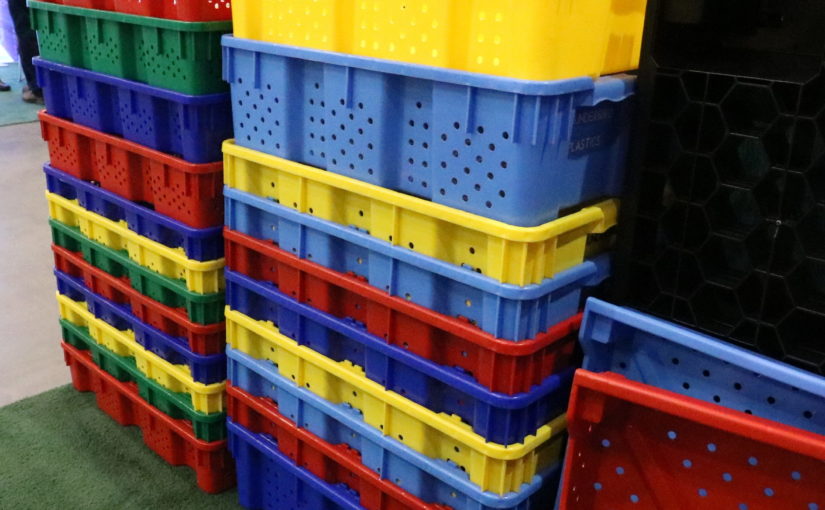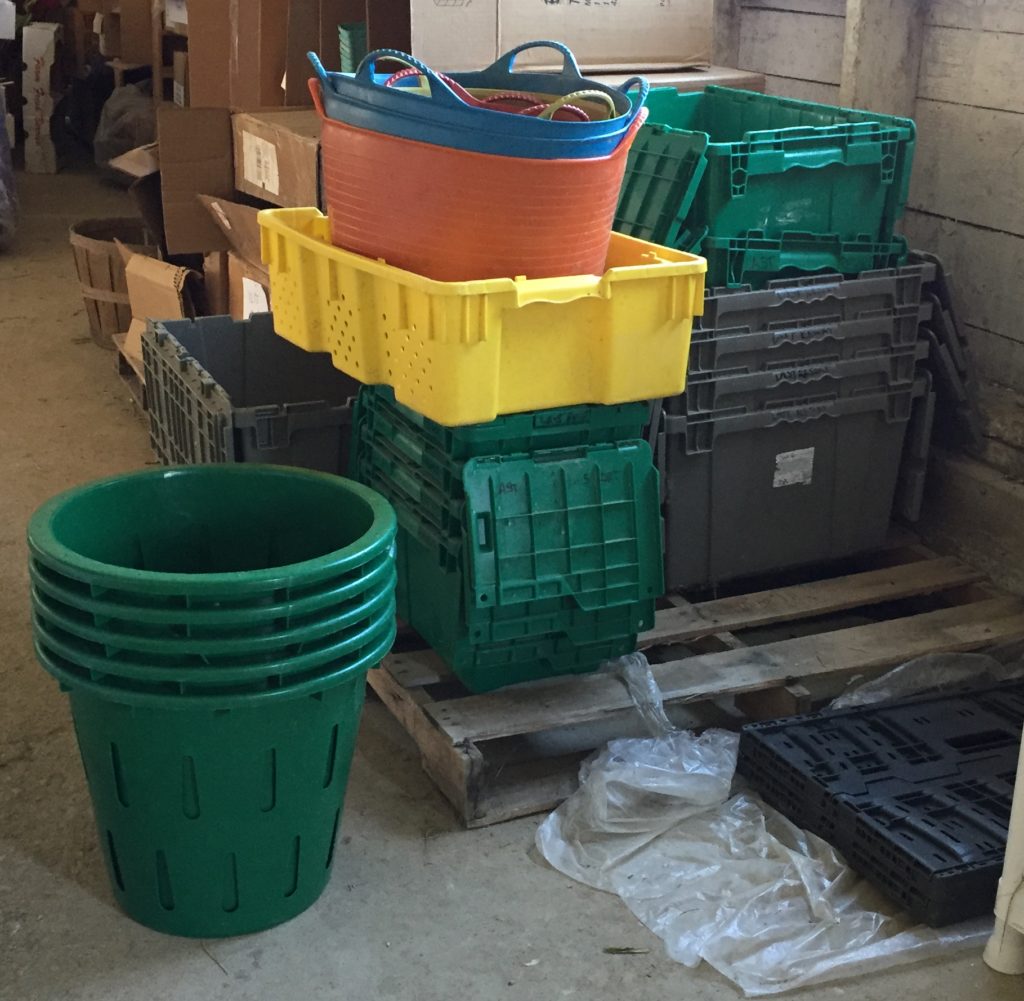So you’re starting to farm, or scaling up your production. You hear talk about produce safety and cleanability. You are checking out what other farms are doing and are looking for harvest crates and storage bins.
You probably noticed lots of people use many different things. Some use 5-gallon pails, milk crates, muck buckets, some use totes found at the box stores, yet others use what seem to be specific, grey flip-top totes. Does it matter what you use? Not really, but you should have some sort of method to the madness on your farm to help minimize contamination, reduce mix-ups, and wasted time. Consistency is key to organization and efficiency.
I commonly hear “Ok, I like this style of totes/bins/crates, where do I find them?” Well, hopefully, this blog post will have a few suggestions to point you in the right direction with user reviews, distributor information, and pictures of features.
You can listen to an audio version of this blog post in this episode from The Ag Engineering Podcast. A companion video playlist is also available on YouTube and individual videos are embedded below.
Table of Contents
Key Considerations
User Reviews
Harvest Containers (and spinner baskets)
Bulb Crates
Corrugated Containers
Round Trip Totes (Flip-top Totes)
Insulated Shipping Boxes
Pallet Bins
Additional Sources of Containers to Consider
Key Considerations
Here are a few items to consider when selecting the right containers for your farm:
- What crops are you going to be moving or storing?
- Do you want drain holes or a solid bottom?
- Should you have vented sides (e.g. for cooling) or is it more important to retain humidity?
- How easy is the container to clean?
- Is the material durable (especially when cleaned and sanitized regularly)
- Can you easily label the container?
- Are the containers sturdy and rigid?
- Does the container provide light blocking and UV resistance
- Can the container be stacked? Think about how stacking can support more efficient use in a cooler, on a hand truck, or in your delivery vehicle.
- Can the container be nested? Nesting can save space when storing empty containers
- Can you purchase different colors? Some growers find value in having the ability to differentiate field totes from storage totes. You also want to dedicate cull buckets from harvest buckets to ensure clean produce.
- Is the container ergonomic – is it easy to pick up? Does it have handles? Properly sized for the product your harvesting? Are the handles comfortable to grasp with a loaded container?
How Much Can I Fit in a Bin?
Based on feedback from the grower members of the Vermont Vegetable and Berry Growers Association (VVBGA), the following storage densities were compiled. This information can help determine how much of each crop you can fit in bin of a given size.
- Carrot, Parsnip, Beet, Radish, Turnip – 20.1 – 26.8 lbs per cubic foot
- Potato – 23.2 – 37.5 lbs per cubic foot
- Sweet Potato – 21.8-26.9 lbs per cubic foot
- Celeriac – 16.0 lbs per cubic foot
- Onion – 21.8-23.0 lbs per cubic foot
- Shallot – 23.5 lbs per cubic foot (in bulb crate)
- Squash, Butternut – 31.3 lbs per cubic foot
- Cabbage – 18.9 lbs per cubic foot
User Reviews
Growers on the Vermont Vegetable and Berry Growers Listserv have posed the question: “What are people’s preferred harvest bins and preferred source for those bins? I am also specifically interested in bins used for picking and storing the following crops (probably more than one bin type total): tomatoes, cucumbers, summer squash, greens and roots (with or without greens).” User responses are as follows.
- We pick all of our large and plum tomatoes into the yellow harvest totes, found in our catalog. They are super durable, we toss them out of trucks into the field and they have lasted 4 years so far. They nest and stack which is a huge plus for storage. Also, they stack on a pallet so it is easy to move around. Easy to clean and overall a great item. Summer squash and zucchini and cucumbers would be great in the yellow totes as well, they have handles on each side so it makes it easy to move around. For greens either the red harvest tote which nests and stacks with the yellow making it a huge space saver, or the green harvest tote. View the catalog on their website.
- Buckhorn! Best crates and some of our original ones used almost weekly from 1995 are still used. They have a list of discounted ones. And they manufacture many sizes. There is a $5000 minimum order to get great pricing (about $10 per bin) or you can order through a distributor with smaller quantities. We get diff colors and sizes and styles for market, storage, and diff weights of crops. We use the lidded 21x15x12 for most everything for markets. We tip to drain them (stack on edge) for the lettuce. We do not want holes in them though I know others drill holes. They would be too messy in our thoughts. Also, use the 9” and double-hinged ones, but are looking to get straight wall ones with no lids for tomatoes, strawberries, etc.
- Macro Plastic. Most of mine are the 34FV. I have some shorter. They are the industry standard really. Light, durable, washable, Incredibly stackable. Pricewise they get pricy when you have to get them shipped.
- At Long Wind Farm, we still have many used “fish boxes.” [Also referred to as “fish totes“] They are excellent plastic boxes for harvest. Volume is about 1/10 of a yard (19″ by 31″ by 12″) They stack or nest. Price is $5 to $6.50 each, depending on volume. We also have many used red plastic berry boxes (13.5″ by 19″ by 4.5”) Price is $4 to $5.50 each, depending on volume. They stack or nest. They are commonly used for harvesting berries. We use them for harvesting tomatoes.
- These trays by Orbis are what we use for tomatoes. They are more durable than cardboard shippers, you can stack them easily and they have a smooth bottom to not leave any indents on the fruit.
Container Comparison
These harvest containers can be called many things, so here are some pictures to show some of the types, and features available.
Note on pricing: Prices noted on the following products is for reference only and highly variable based on litem specifics including size, shipping location, quantity ordered and may change based on product availability at the time. Freight charges and bulk orders heavily impact the quote you may receive from the purchaser. A few common retailers are listed in each section and additional sources are noted at the bottom of this article.
Harvest Totes, Lugs & Trays, Buckets & Baskets
Harvest Container Review Video
Harvest Container Gallery
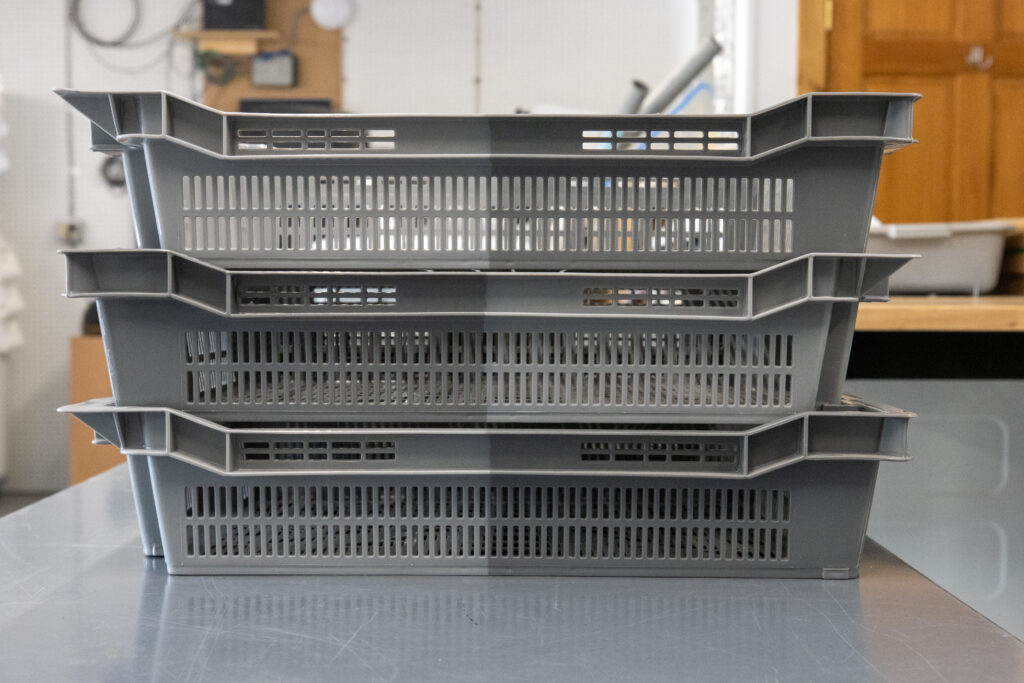
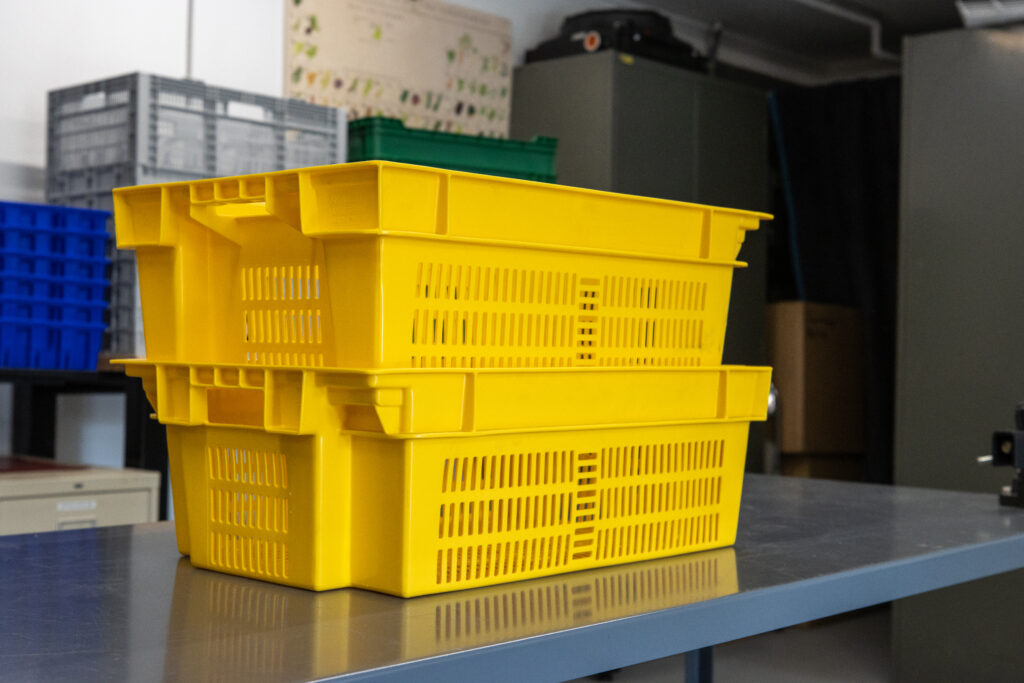
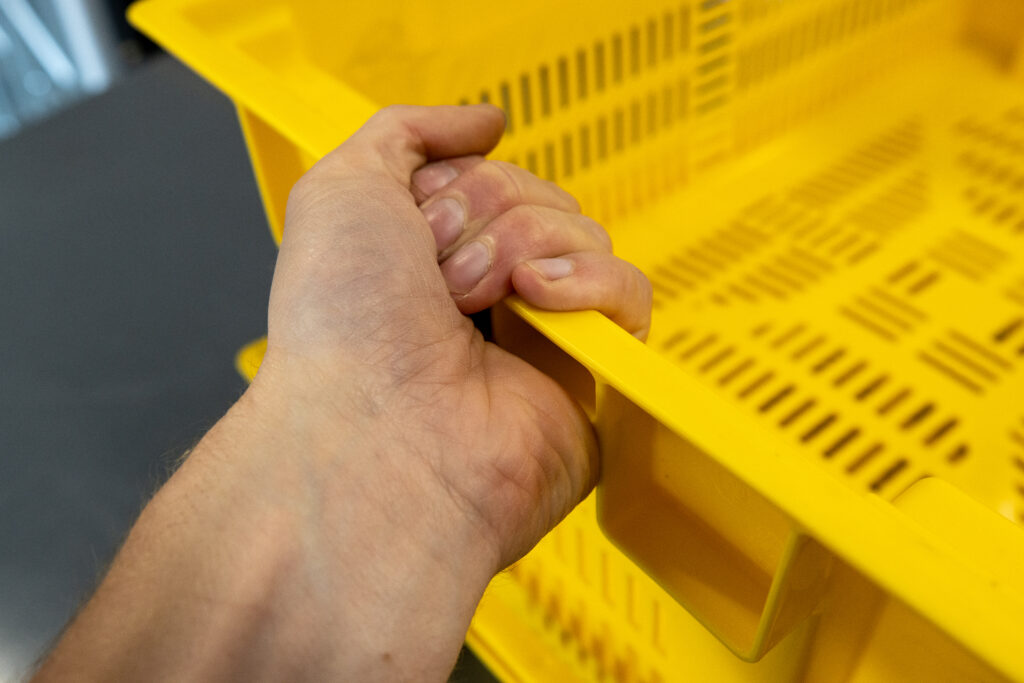
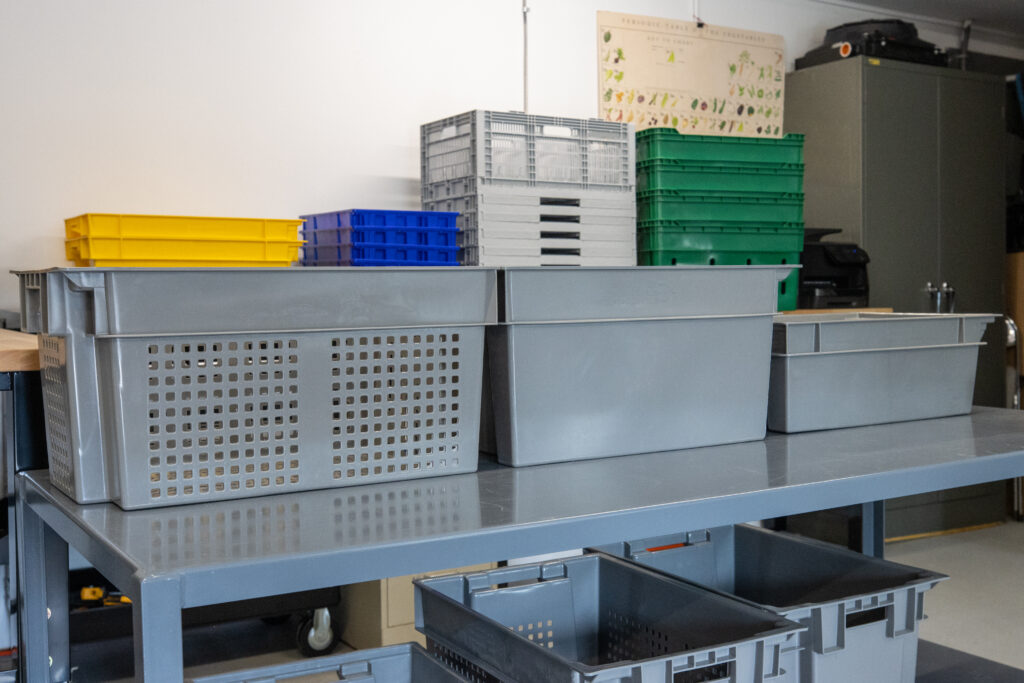
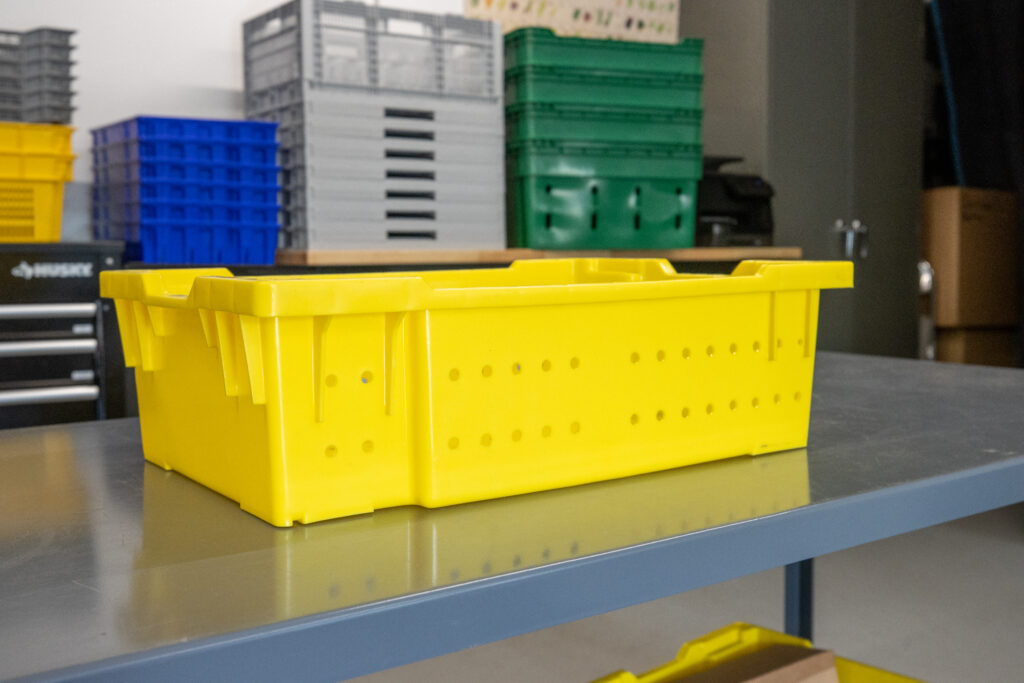
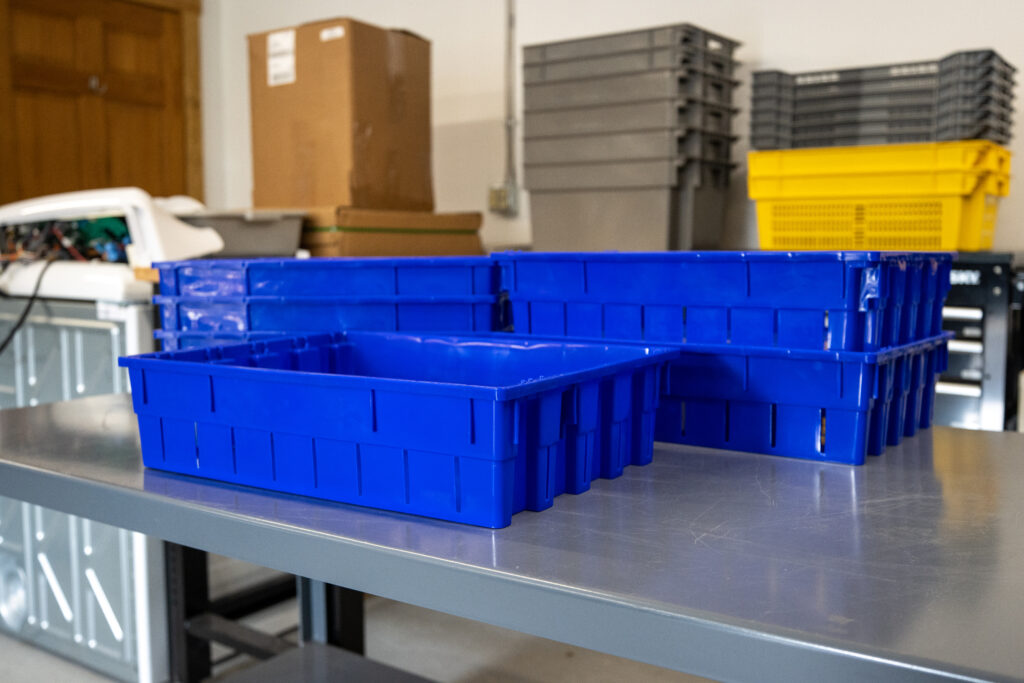
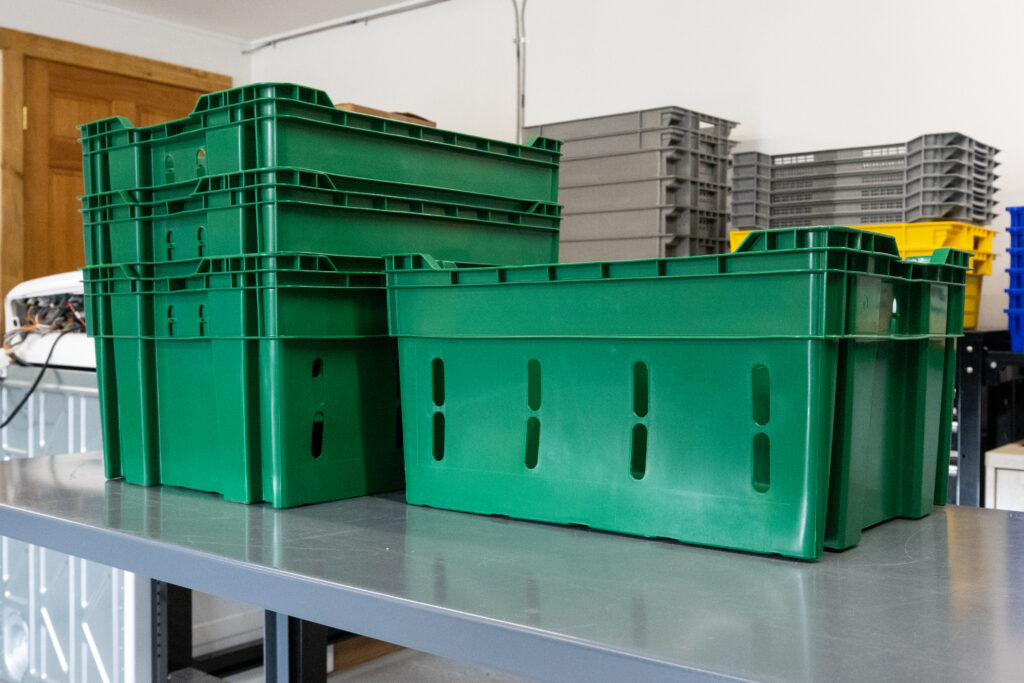
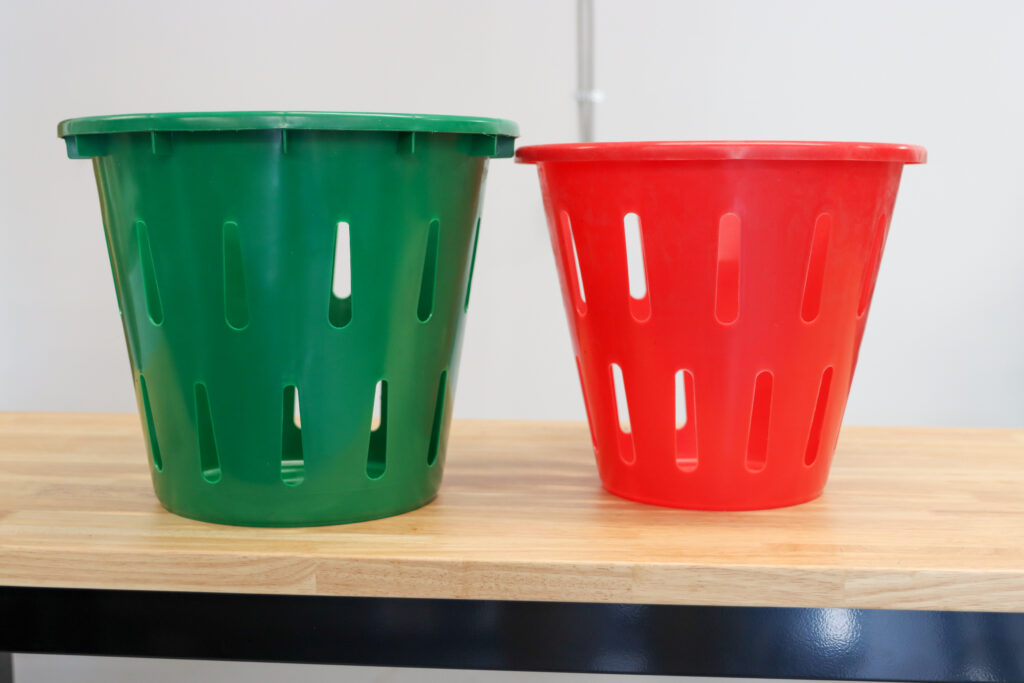

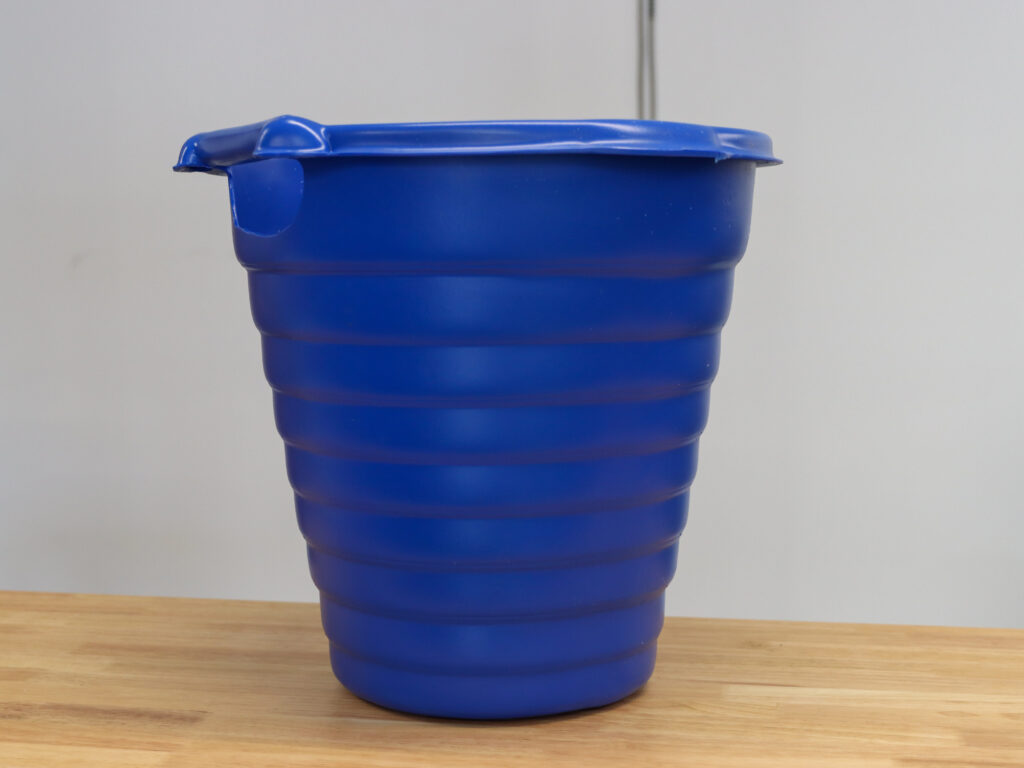
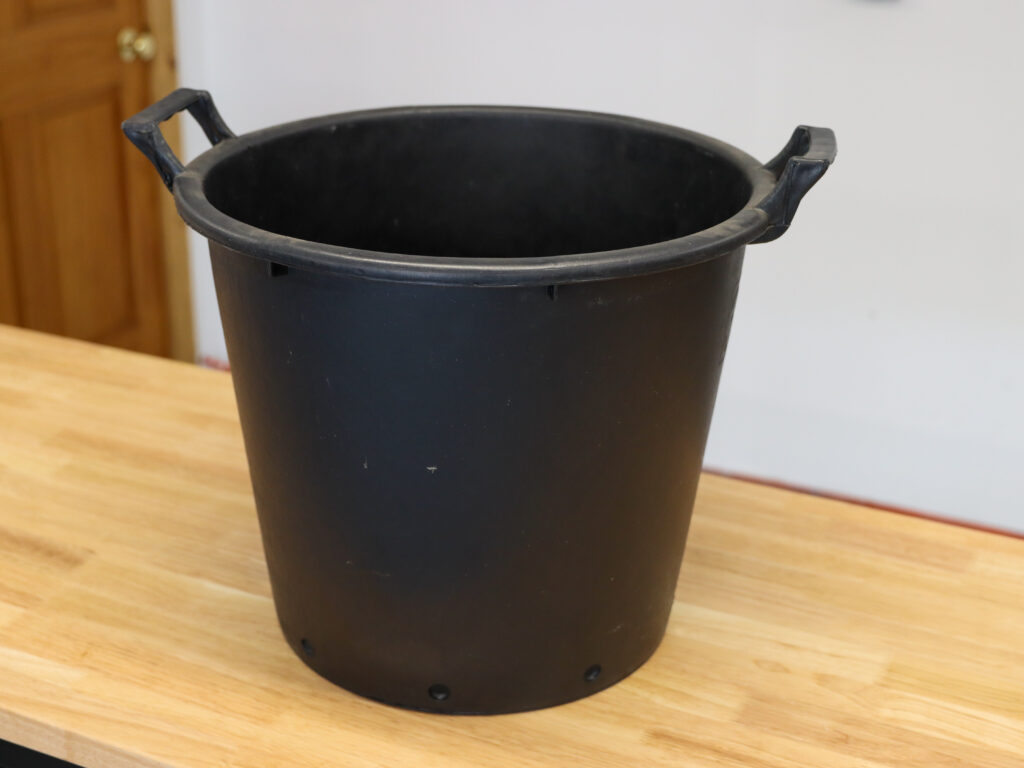
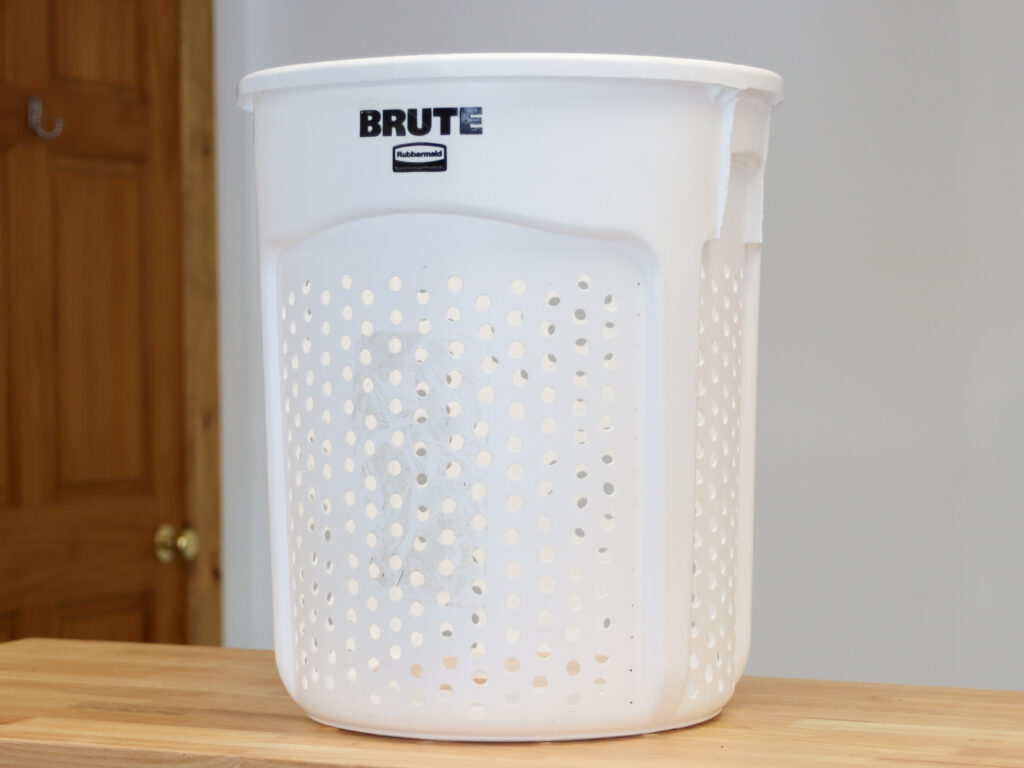

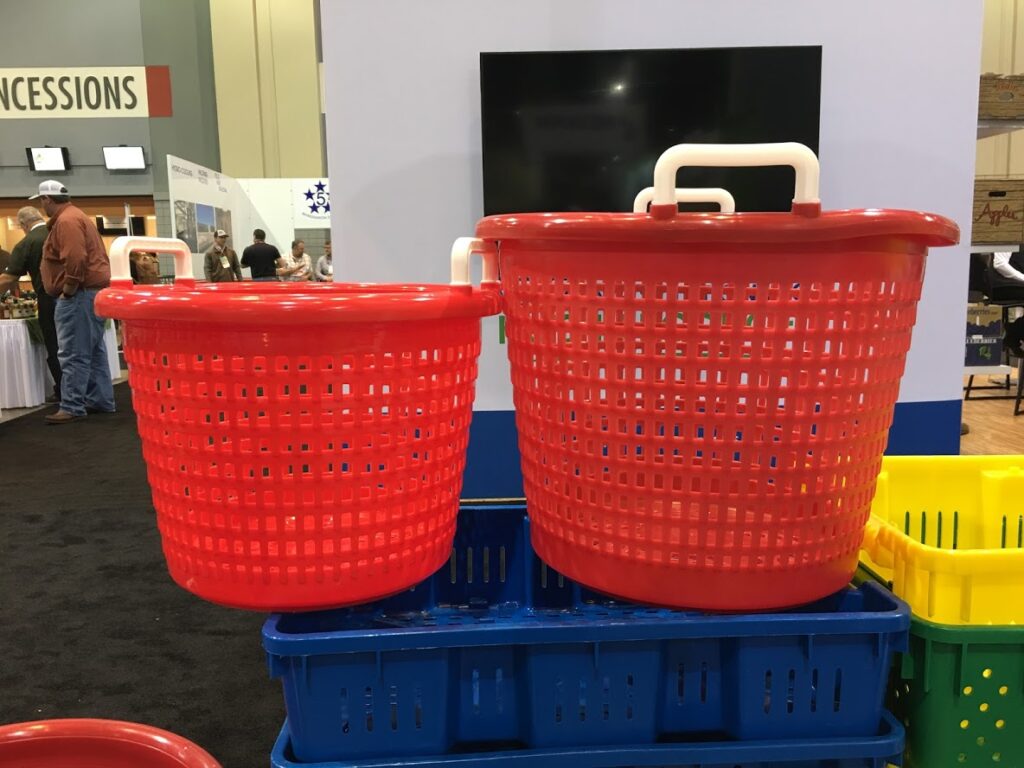
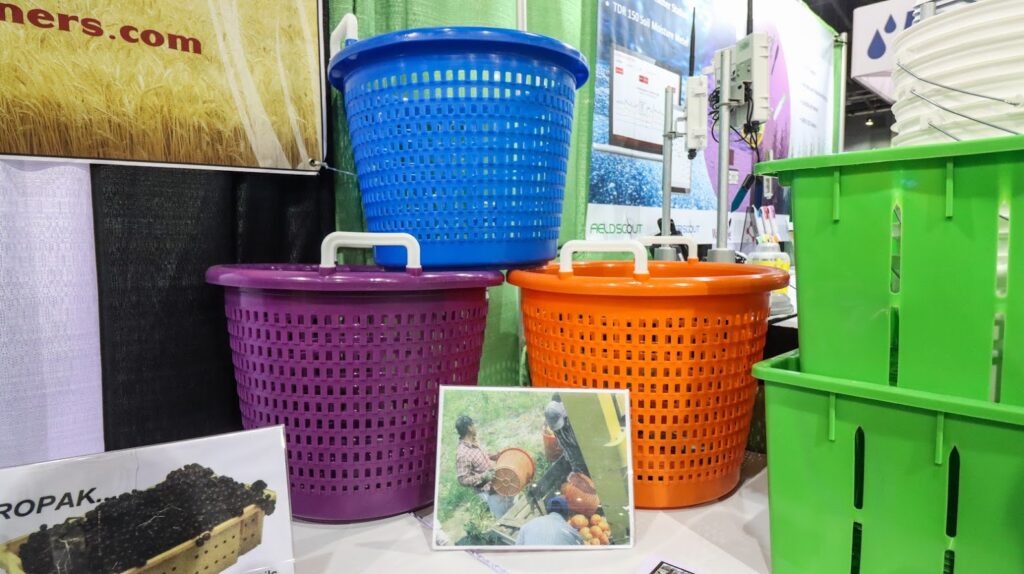
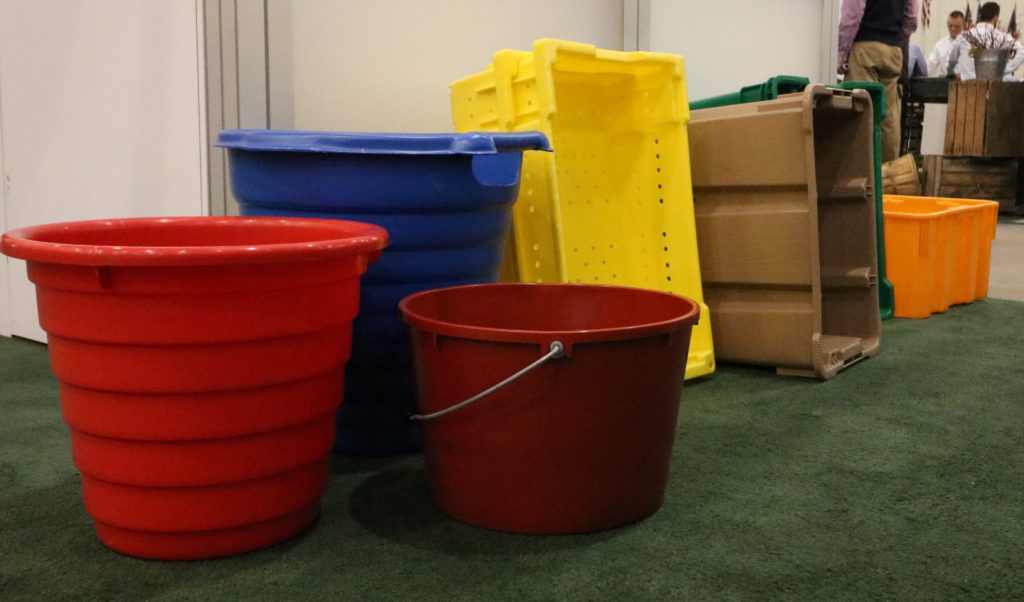
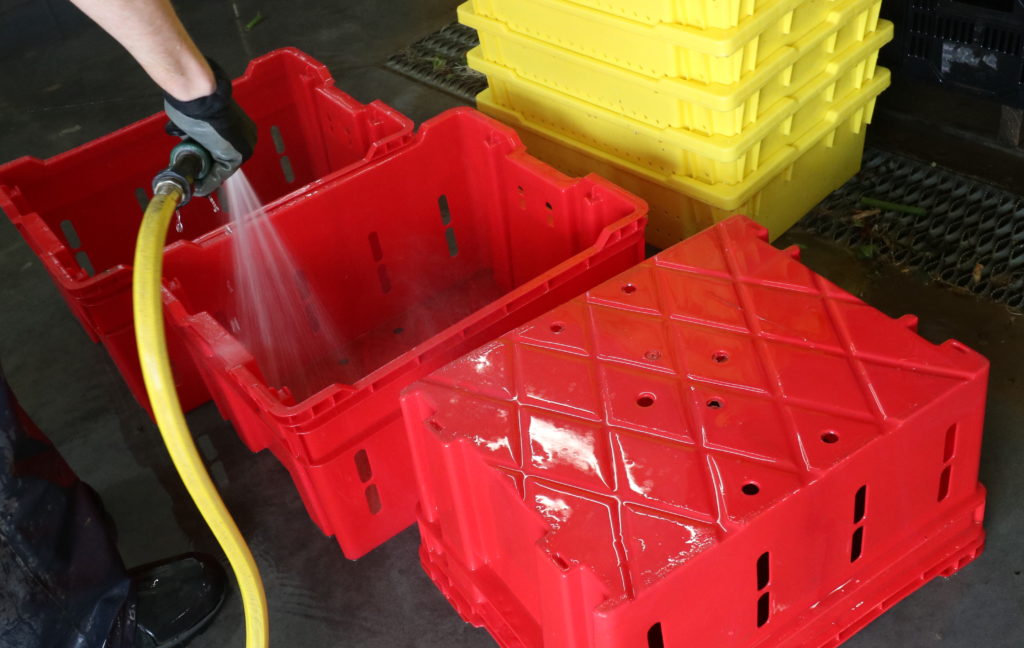

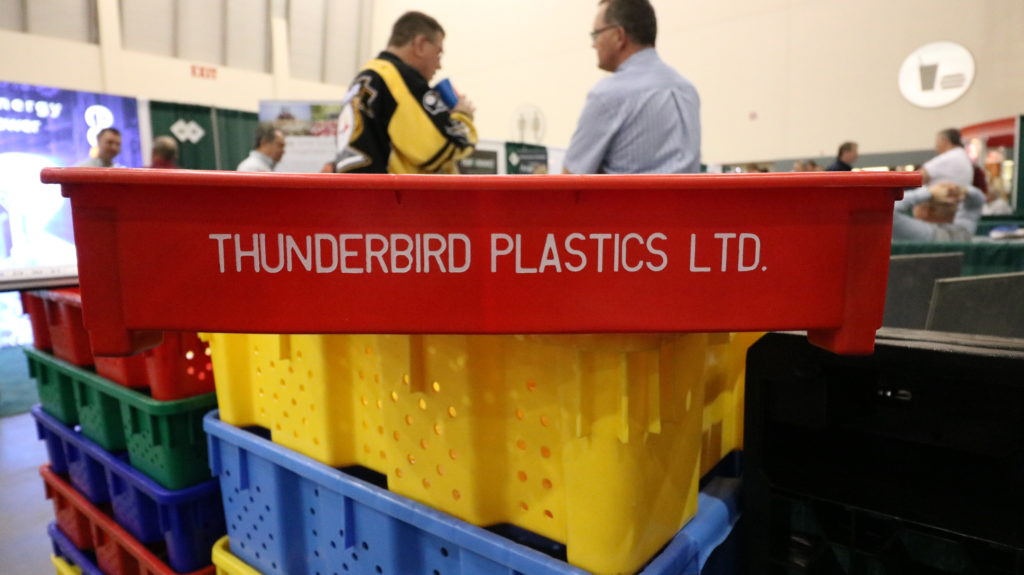


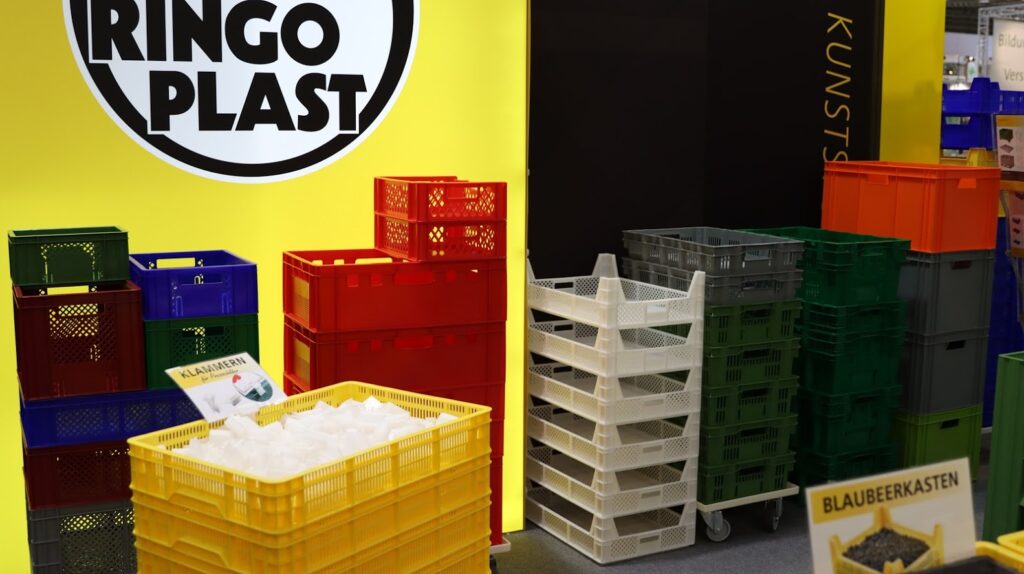

Purchase Locations
Brookdale Fruit Farm (Hollis, NH)
Dubois Agrinovation (Quebec, CDN)
Rainflow Irrigation (East Earl, PA)
Monte Package Company (Riverside, MI)
Martin’s Produce Supplies (Shippensburg, PA)
Nolts Produce Supply (Leola, PA)
Oesco (Conway, MA)
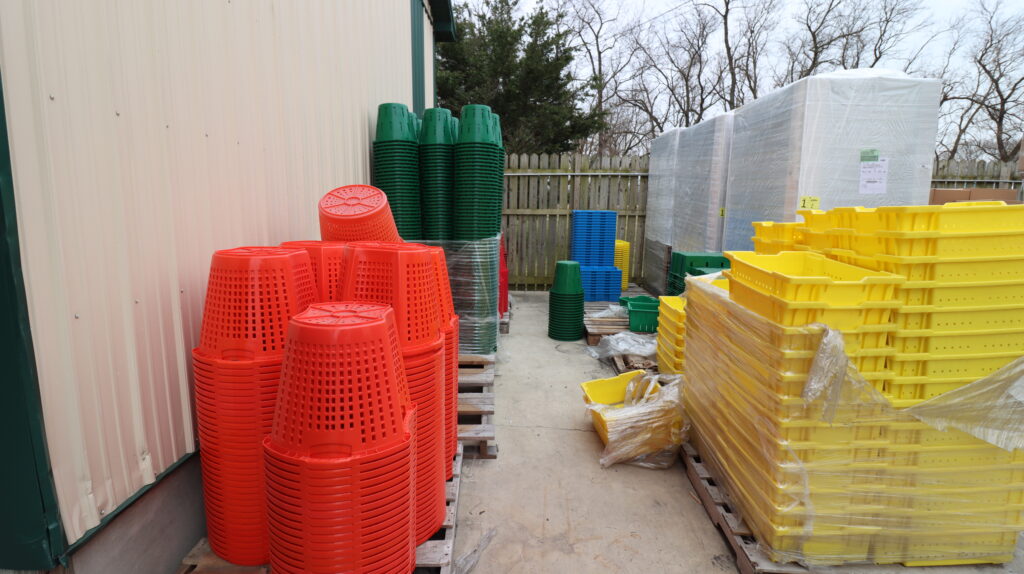
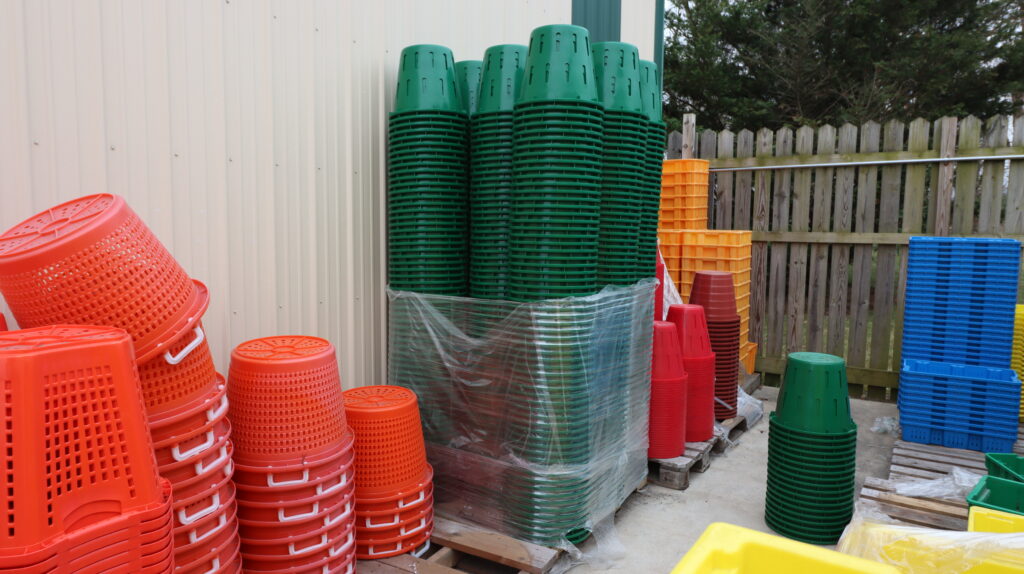
Orange Basket Review
“We use the fish baskets to hold greens in our Speed Queen greens spinner. We regularly wash and spin baby arugula, lettuce salad mixes, micro greens, and pea shoots. The fish basket fits perfectly into the top of the Speed Queen without any adjustments. It simply plops in, and sits there. As long as the greens are evenly distributed the fish baskets will hold in place without any additional securing for the spinning process. The holes on the baskets are large enough to let water escape, but tight enough to limit the loss of even our smallest micro greens. Some do slip through, but a very marginal amount. The fish baskets are also easy to clean and sanitize. The ridges, holes, and lips of the baskets are not super deep, and a simple brush can easily reach everything for a thorough cleaning.” – Russell Honderd, Love is Love Cooperative Farm
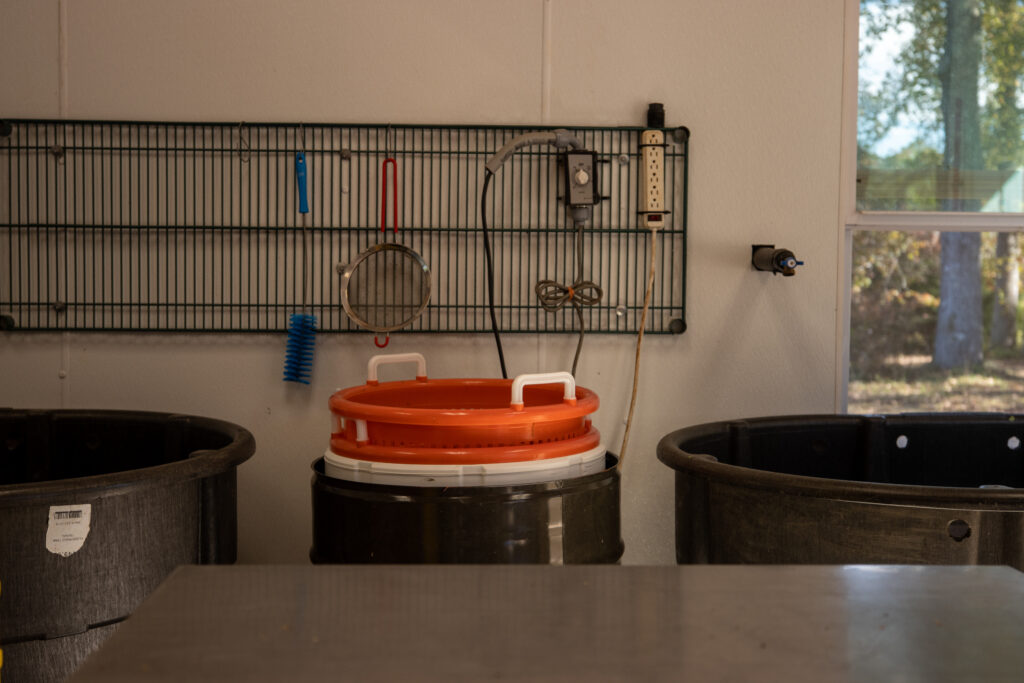
Bulb Crates
Crate Gallery
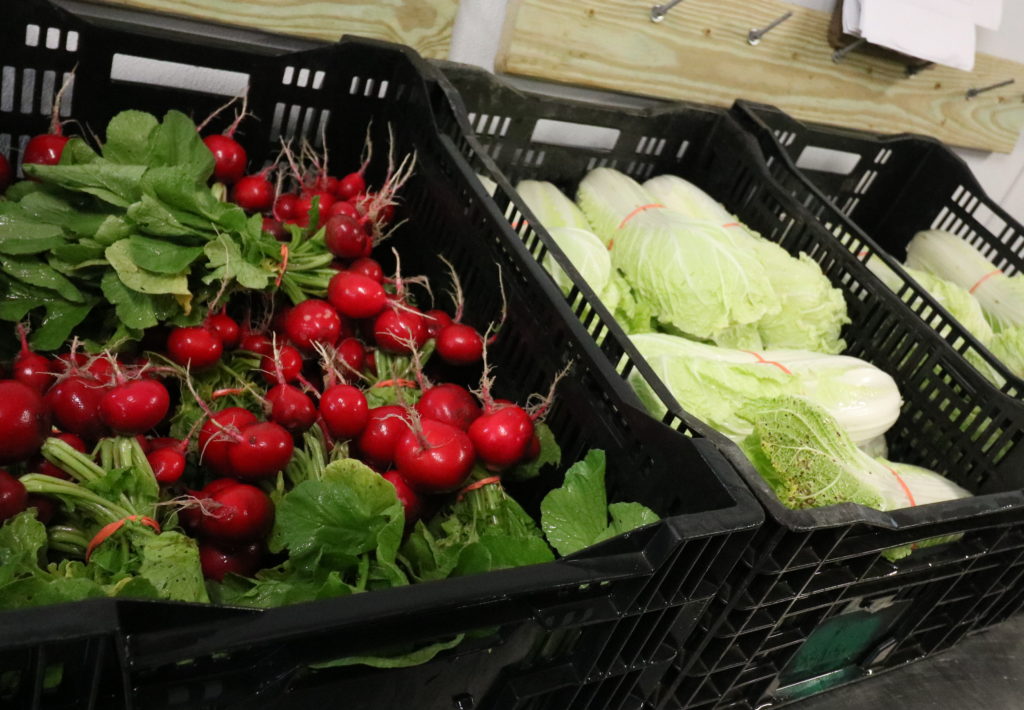

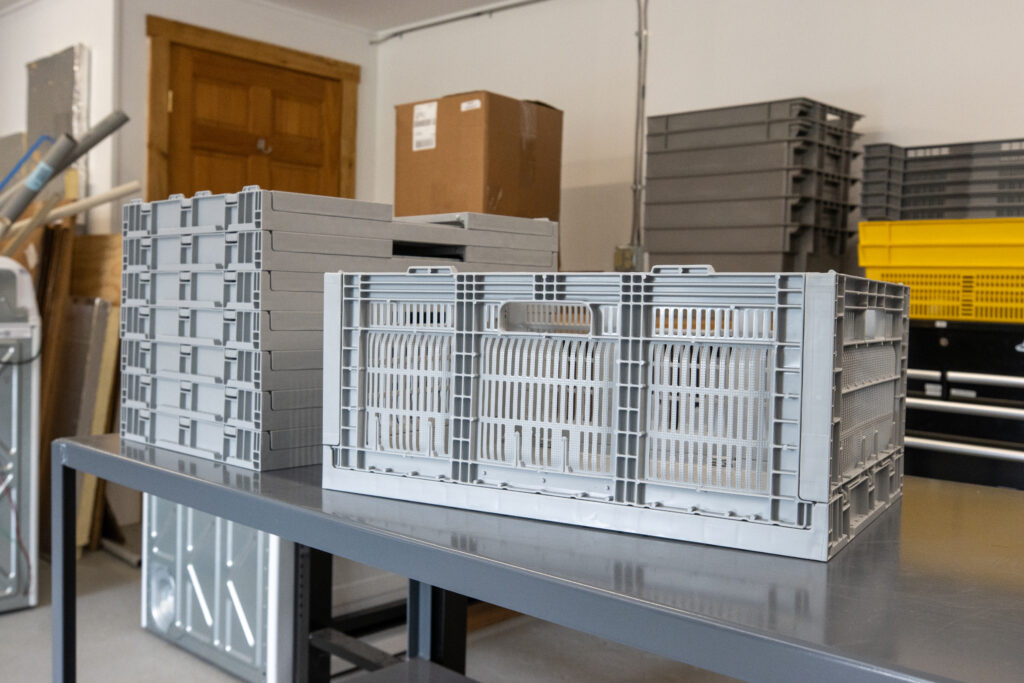
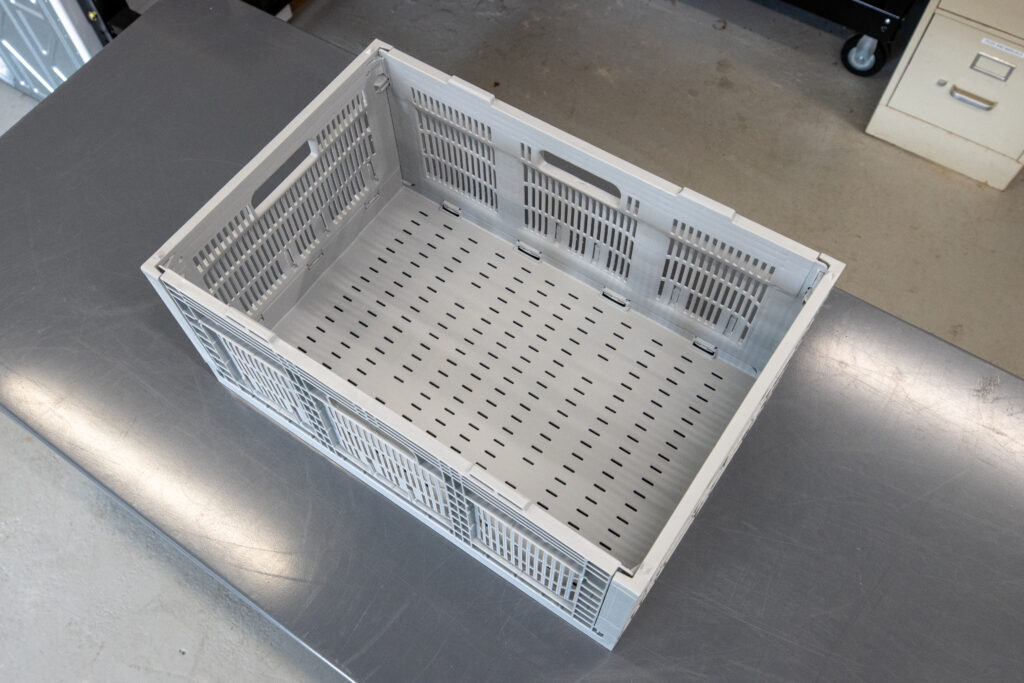
Many US Farmers generally get their crates second hand (used) from other farms or larger greenhouse operations that get their bulbs imported from Holland.
Sometimes Seasonal Rental is an option from companies like IFCO
Purchase Locations
Dubois Agrinovation (Quebec, CDN)
Reusable Transport Packaging (St. Petersburg, FL)
Claussen’s (Colchester, VT)
(Manufacturer) Beekenkamp (BS Maasdijk, Netherlands)
Ednie Flower Bulb (Fredon, NJ)
Fedco Seeds (Clinton, ME)
Garland’s Farm & Garden/Agway (Rutland, VT)
Holland Beauty (Milwaukee, WI)
Michigan Bulb Co (Lawrenceburg, IN)
Corrugated Containers
For some situations, a lighter weight container may work just fine. There are wax boxes, or plastic corrugated options out there. They are light weight compared to the rigid plastic alternatives, but will not last as long and may be a bit more challenging to clean.
Uline – Wax Boxes ($3)
CoolSeal – Plastic Crop Box ($6)
Flexcon – Postal Tote ($15)
Round Trip Totes, also known as Flip Top Totes
Review & Comparison Video
Tote Gallery
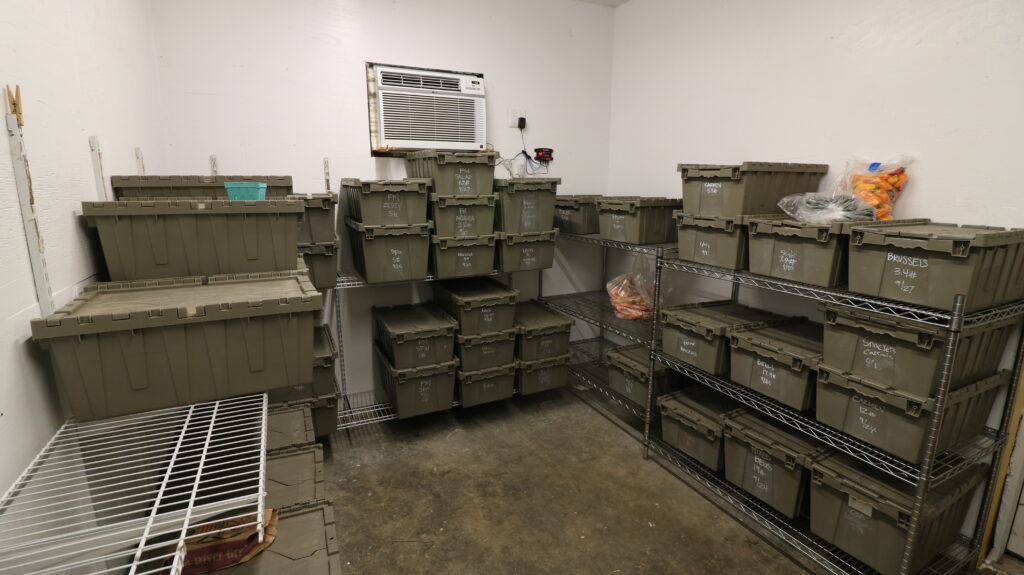
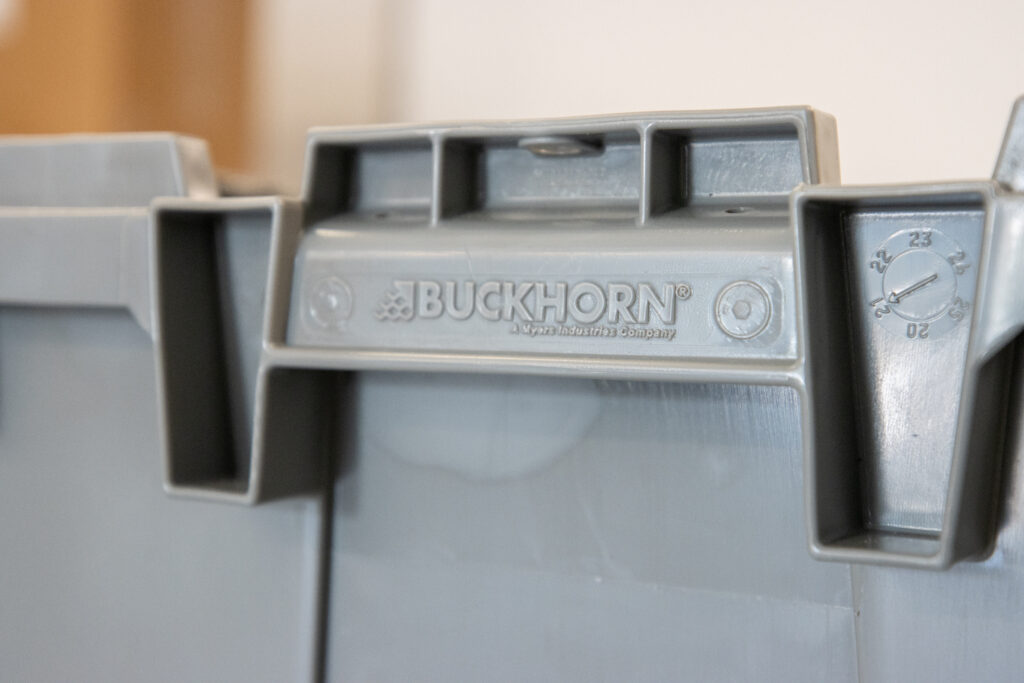
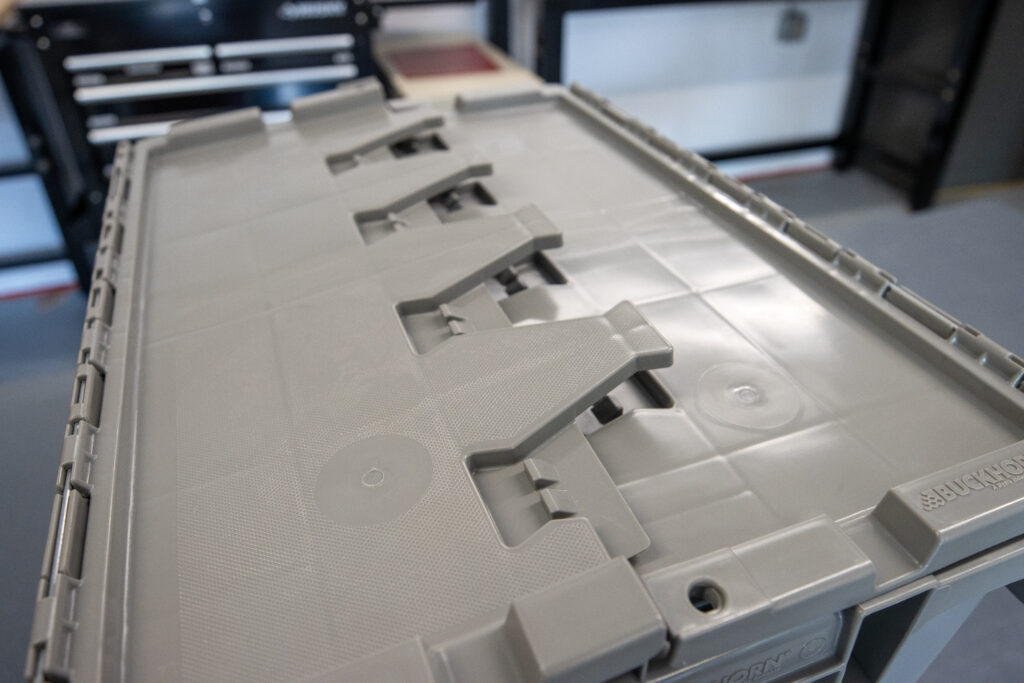

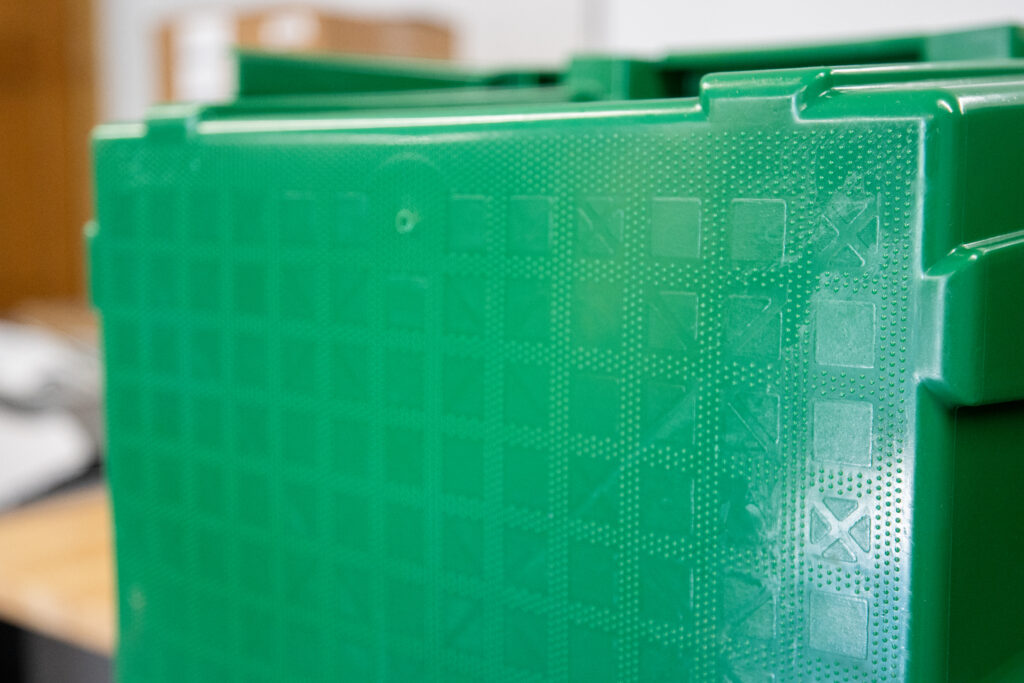

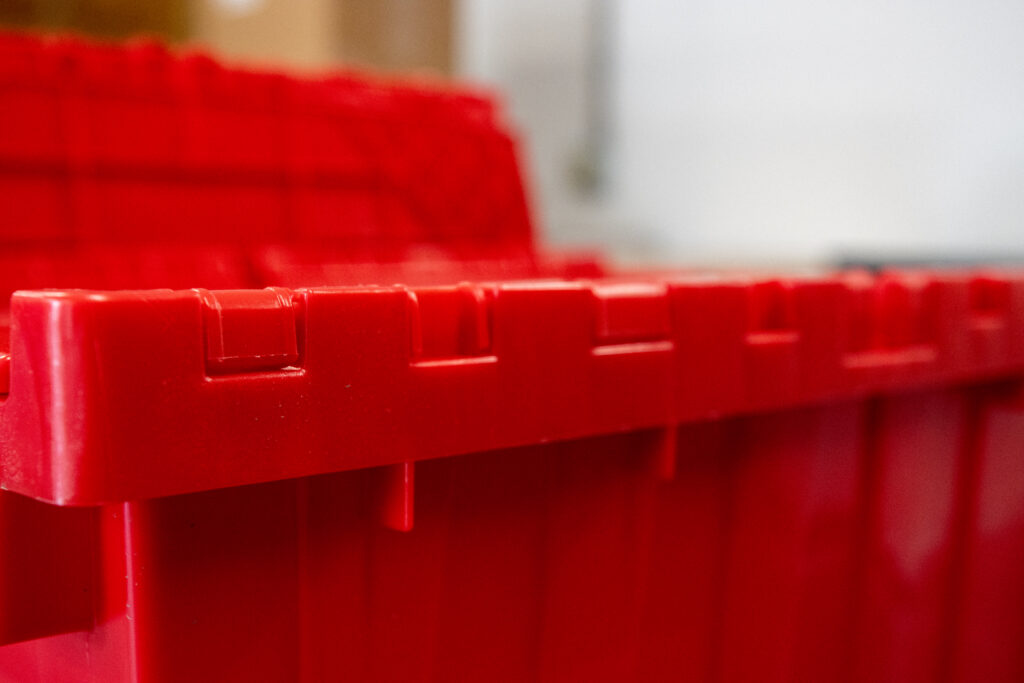

Pricing Estimates for Round Trip Totes
For a tote approximately 22″x15″x12″ you can expect to pay around the following price:
Uline – $17
Global Industrial – $26
Buckhorn (Grainger)– $44
Purchase Locations
Uline (Pleasant Prairie, WI)
Global Industrial (Port Washington, NY)
D.C. Graves (Wakefield, MA)
Insulated Shipping Boxes
Liviri – Liviri (Fort Collins, CO)
Pricing: $44.99/box plus $10.50/ice pack and $9 thermal divider, all with a 2 year warranty.
Liviri Gallery
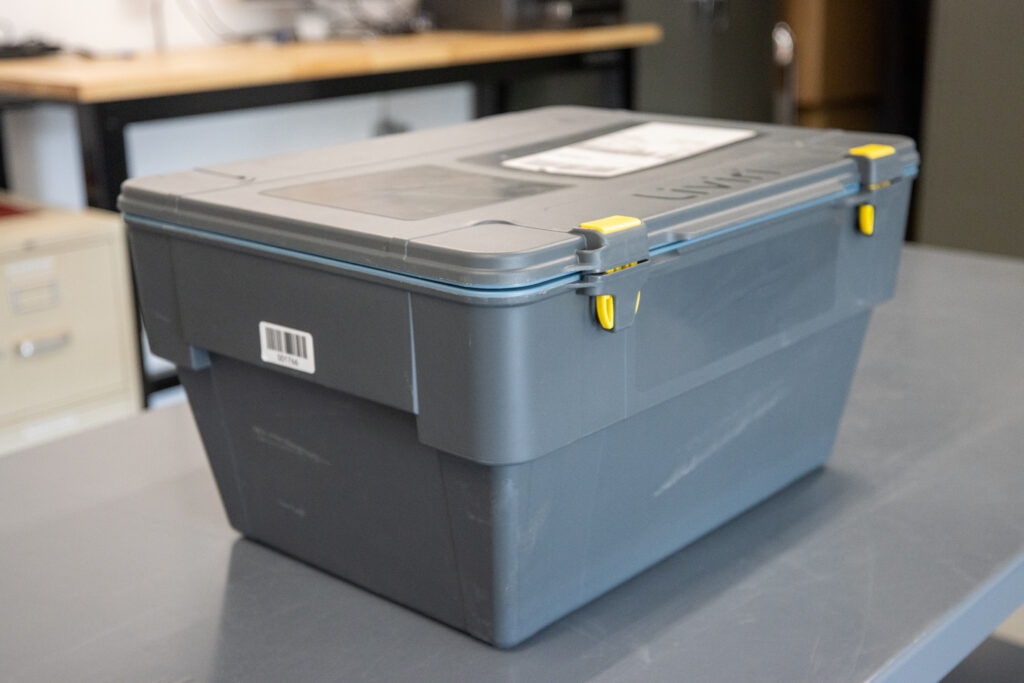
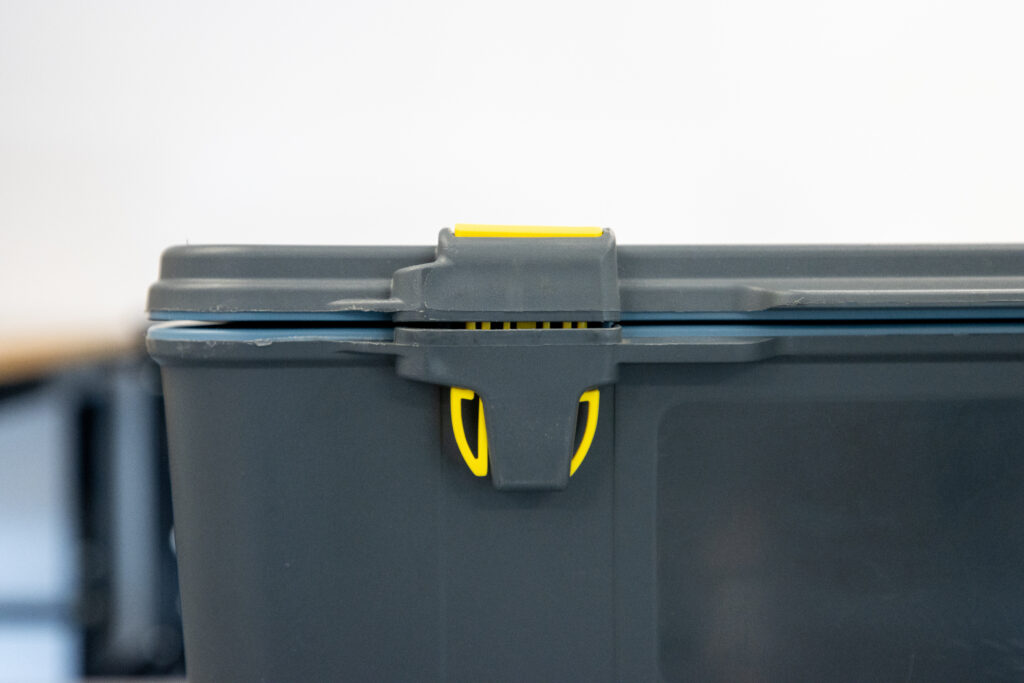
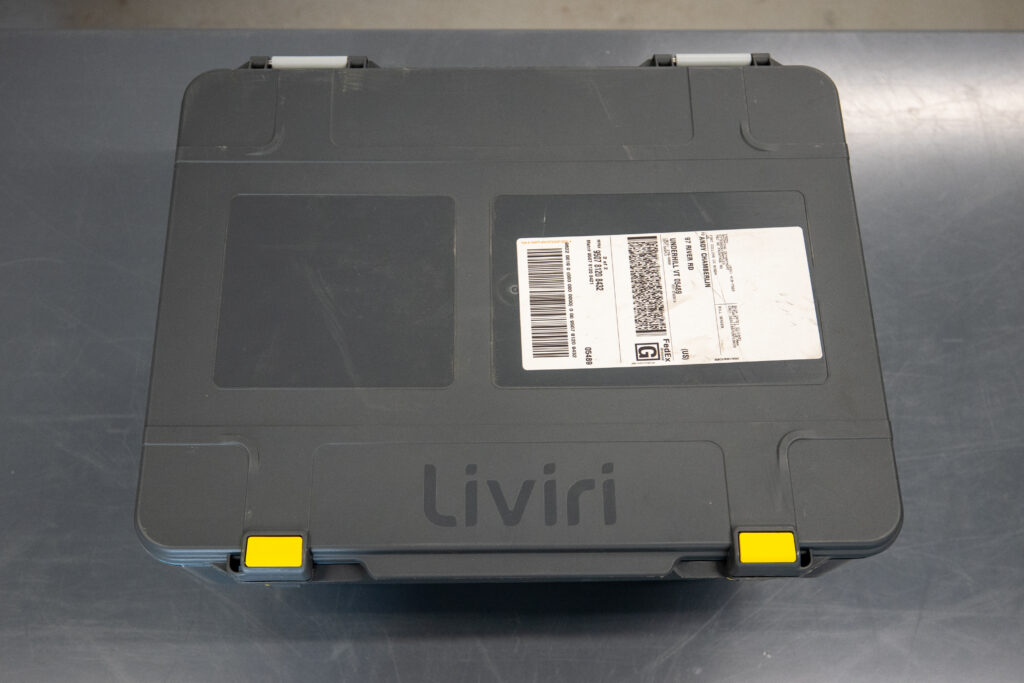
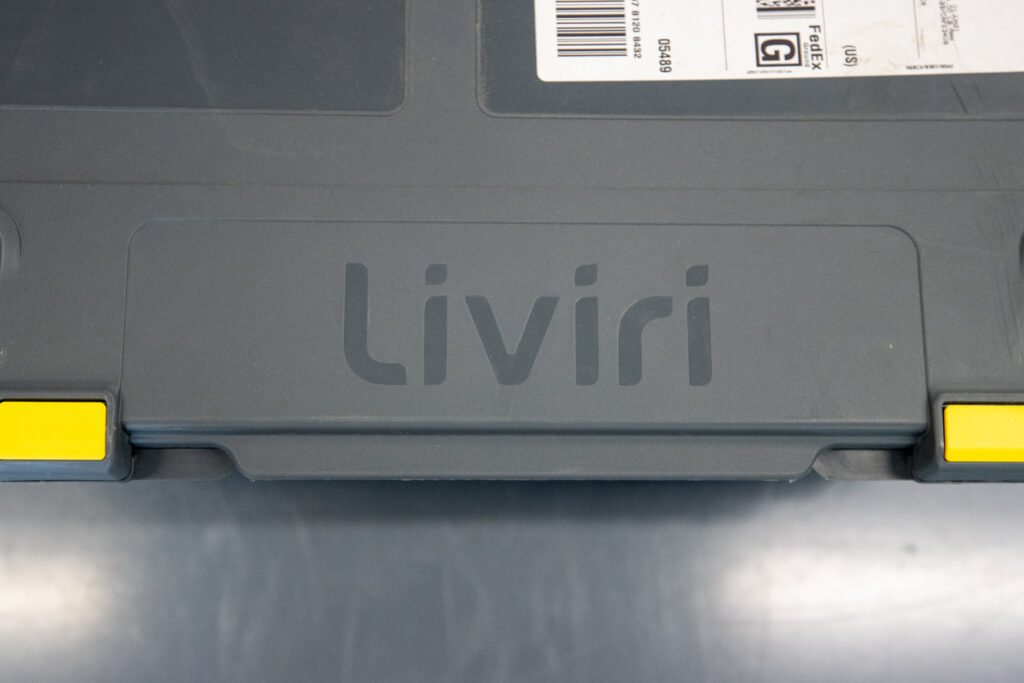
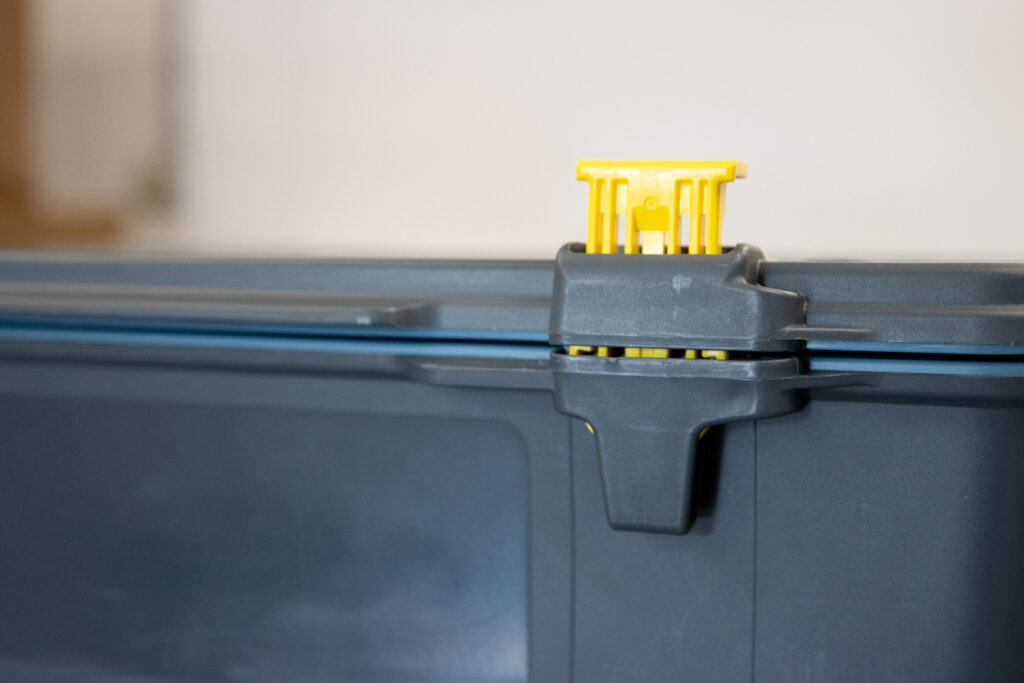
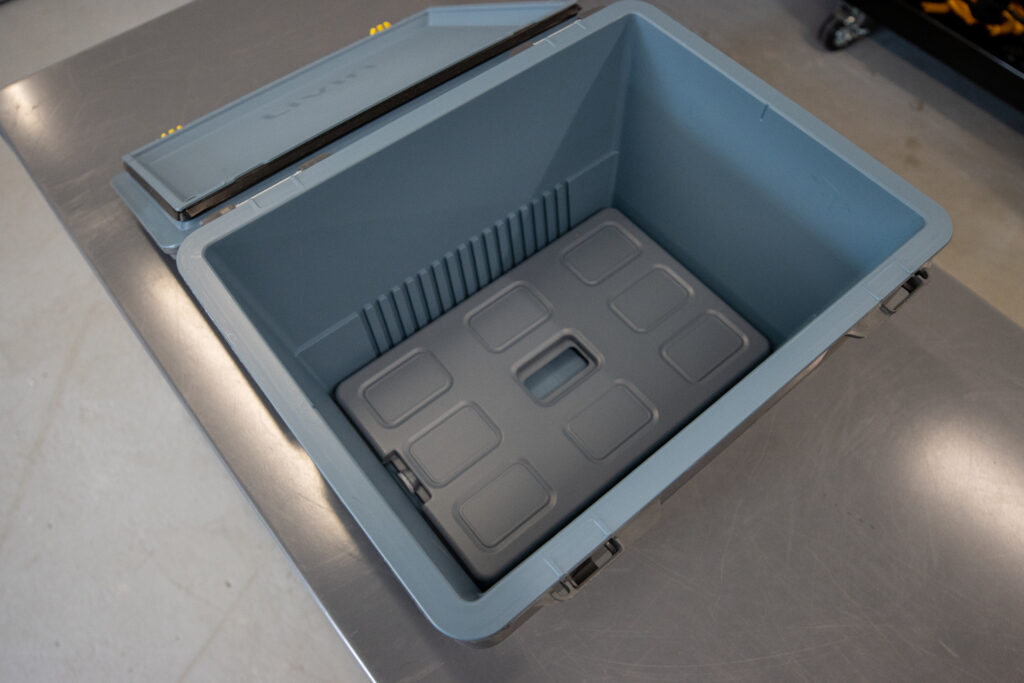
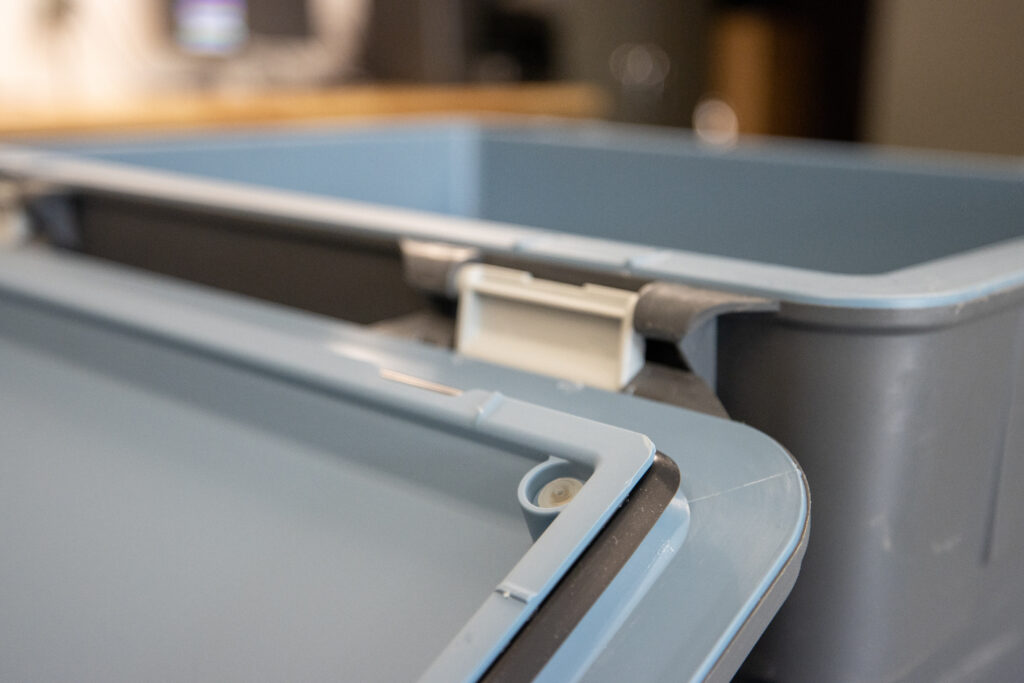

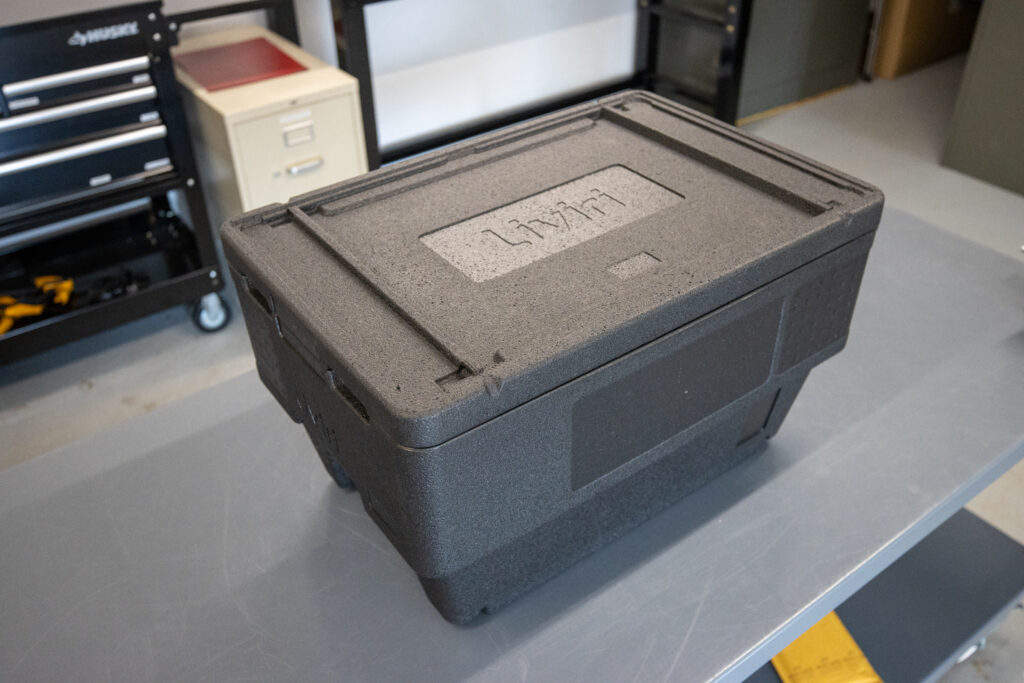
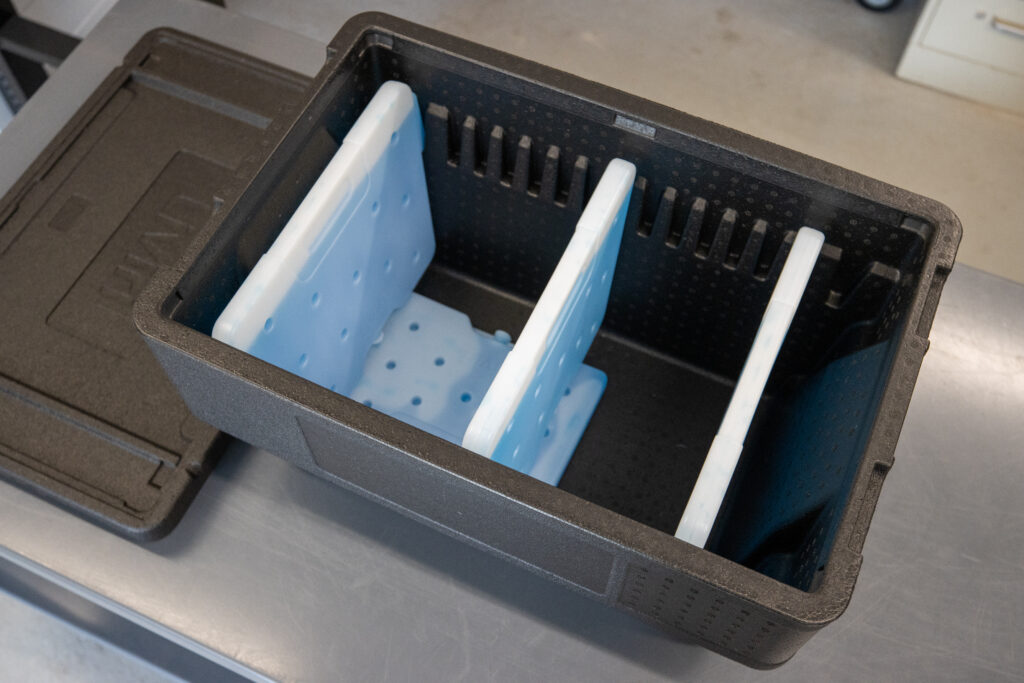
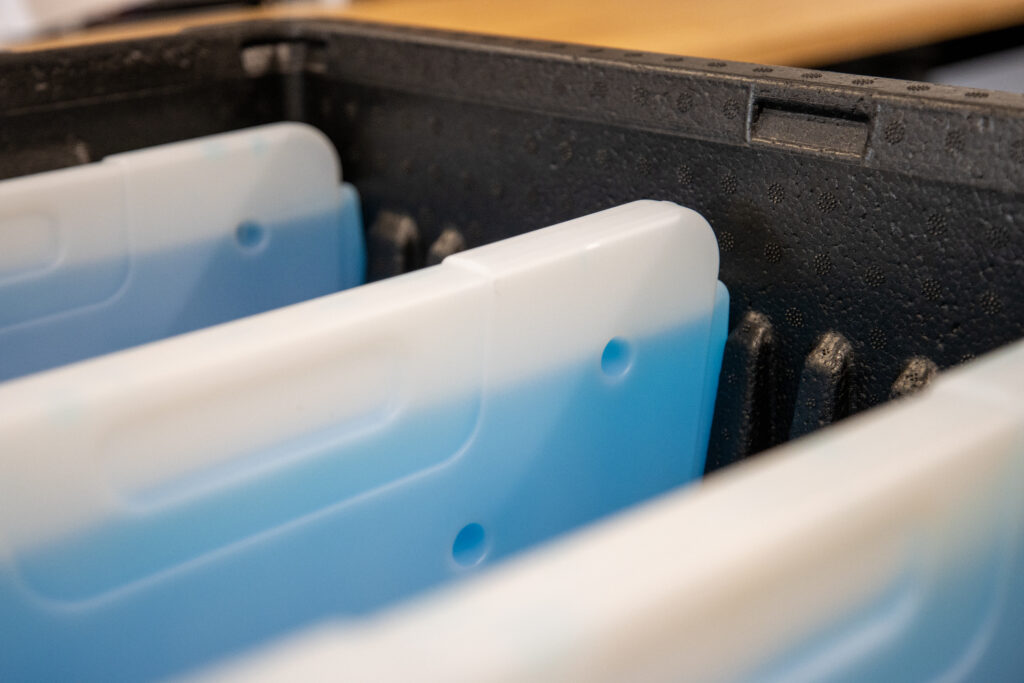
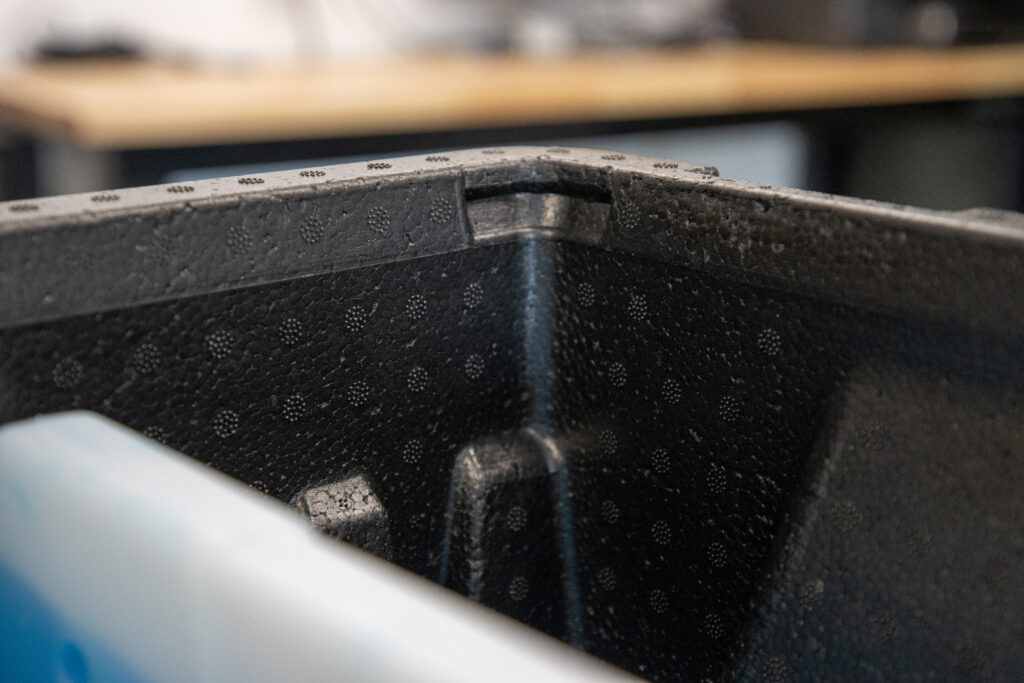
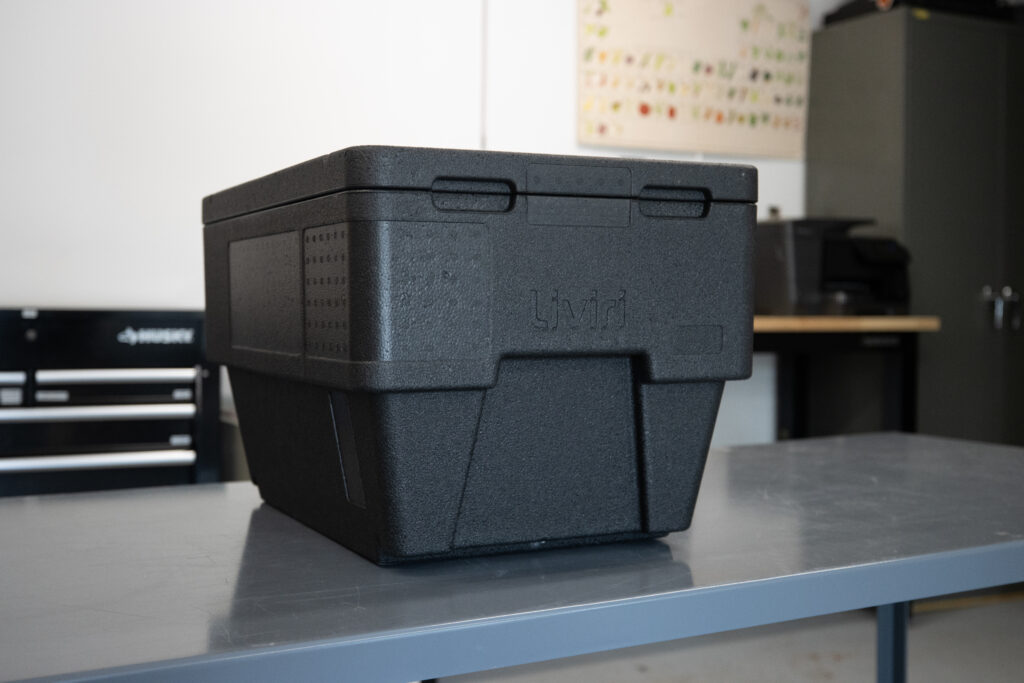
Additional Insulated Options


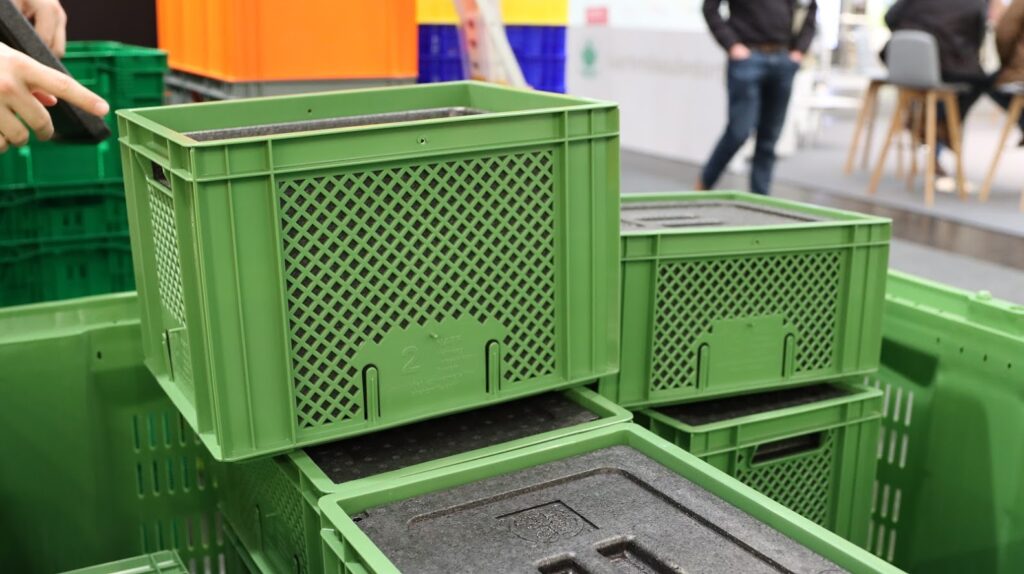
Pallet Bins
Pallet Bin Gallery

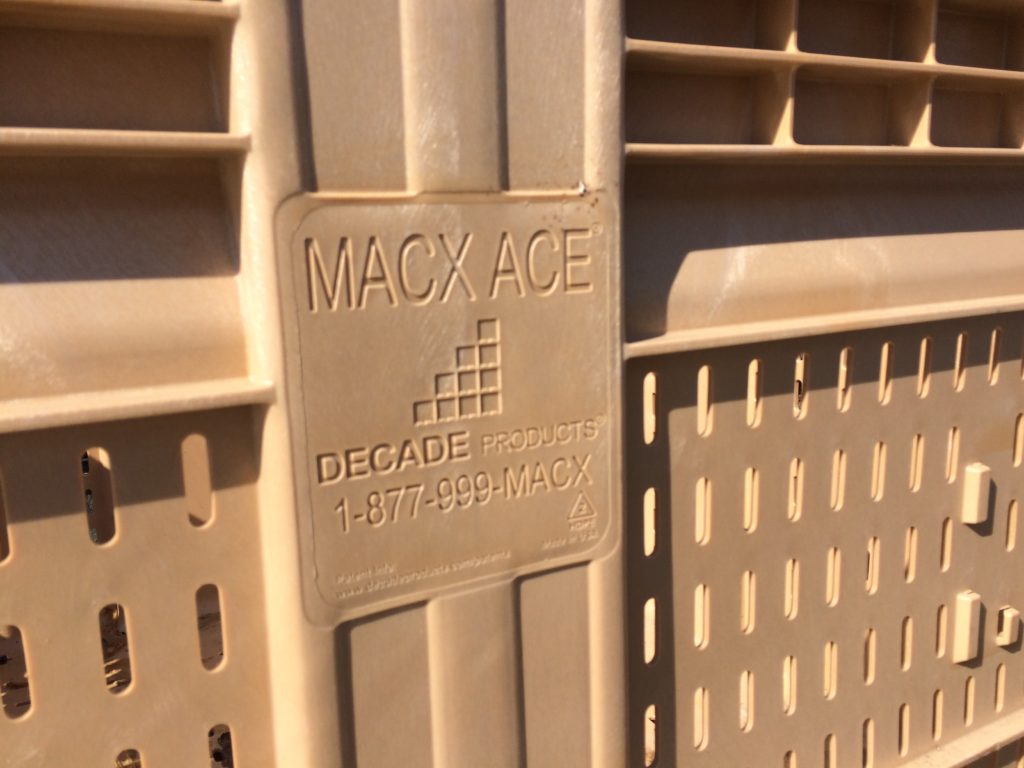
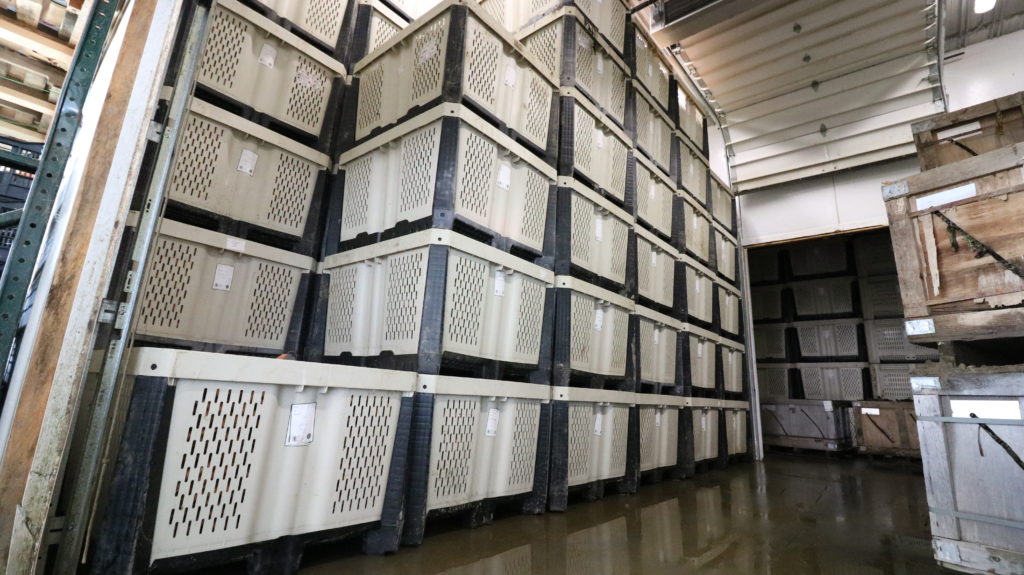

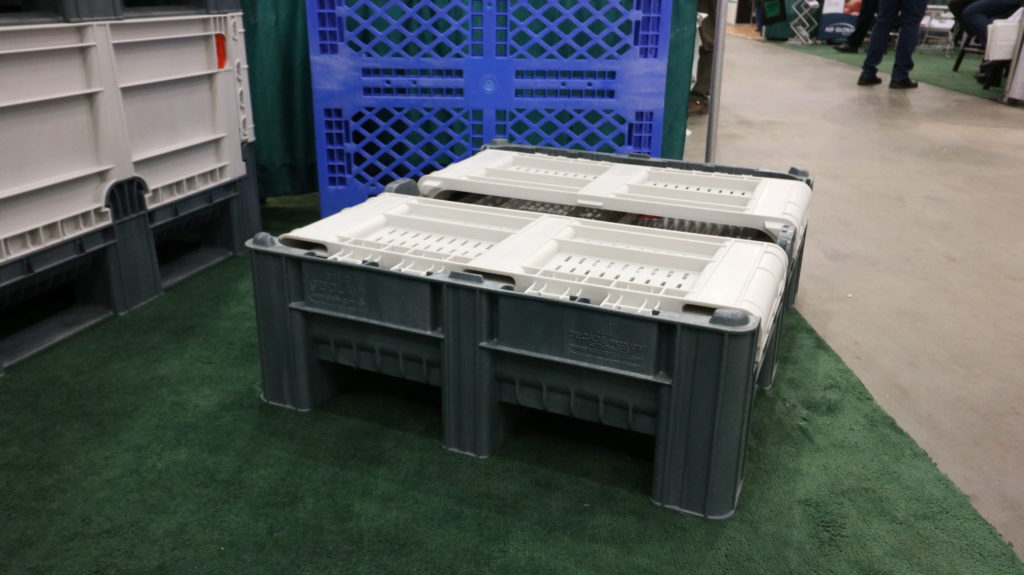
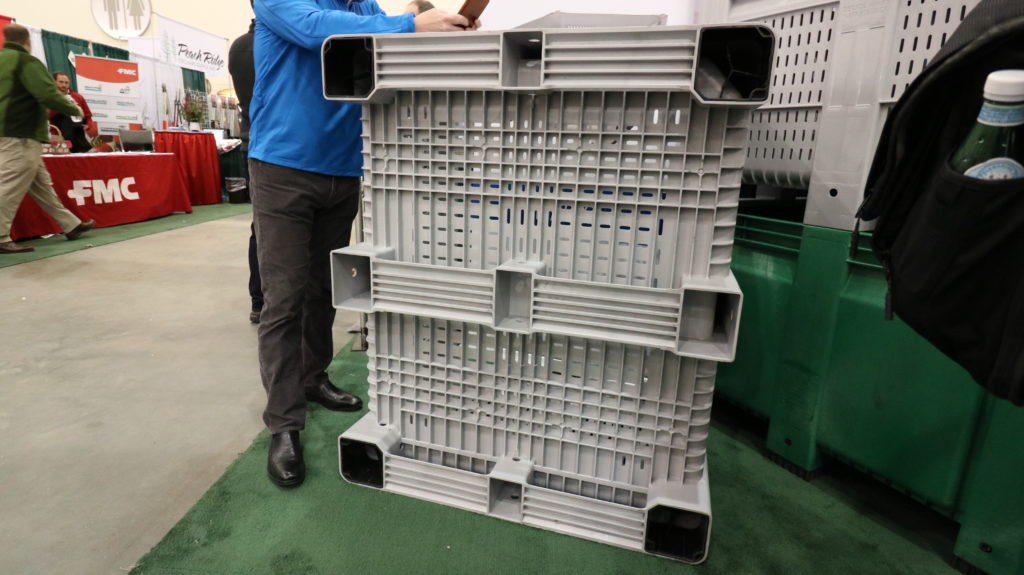
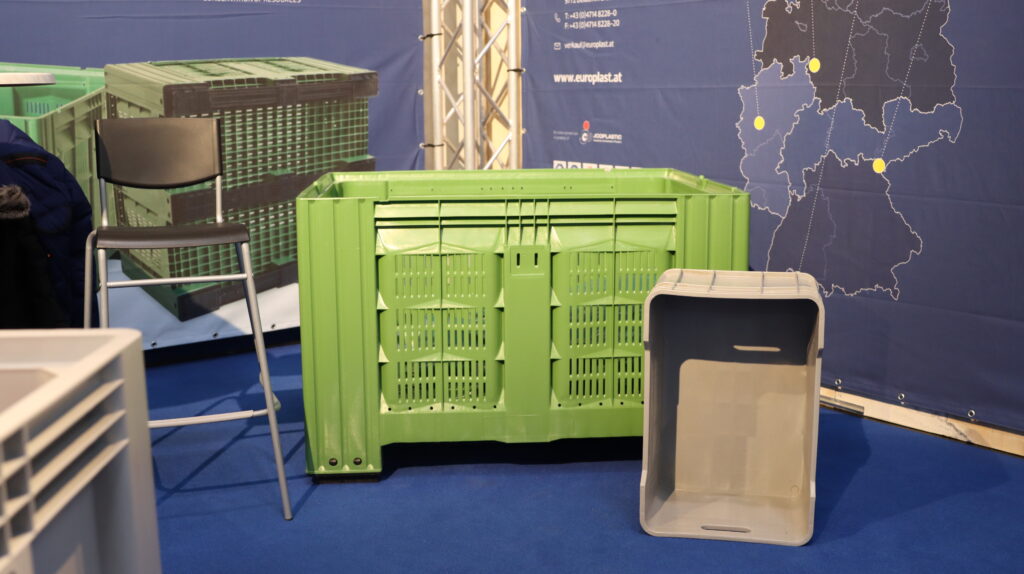
Decade bins are made with HDPE plastic. So when they are broken or stabbed by a fork they can be fixed with heat and a screwdriver to melt back together.
Trevor Hardy, Brookdale Farm Supplies
Purchase Locations
Decade Products (Grand Rapids, MI)
Brookdale Farm Supplies (East Coast Supplier)
Macroplastics (Fairfield, CA)
Additional Sources of Containers to Consider
Distributors and product suppliers
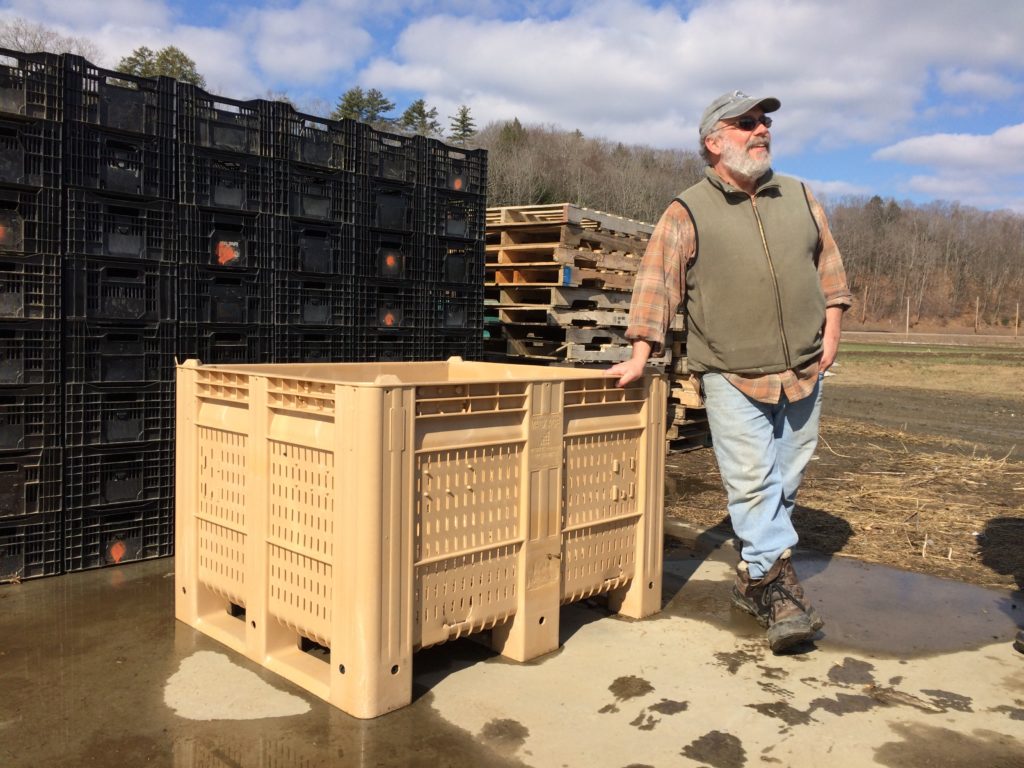
Buckhorn (Milford, OH)
Cool Seal USA (Perrysburg, OH)
Denham Plastics (Salinas, CA)
Europlast (Austria)
InterCrate (Salinas, CA)
Orbis Corporation (Oconomowoc, WI)
Ringo Plast (Germany)
Thunderbird Plastics (Savannah, GA)
Bulk Container Express (Cincinnati, OH)
Glacier Valley (Baraboo, WI)
Grow Organic (Grass Valley, CA)
Jordan International (Jacksonville, FL)
Progressive Grower (West Wareham, MA)
Reusable Transport Packaging (St. Petersburg, FL)
Recoltech (Quebec, Canada)
Tranpak (Fresno, CA)
How to Clean Bins – One Page PDF
Is your favorite bin or supplier not listed? Send us an e-mail so we can get it added.
Share this post using this short link! go.uvm.edu/bins
Acknowledgments
Funding for this publication was made possible, in part, by the Food and Drug Administration through The Vermont Agency of Agriculture Food and Markets via the Integrated Extension Educational Programming in Support of the VAAFM Produce Program Grant 02200-FSMA-2018-01. The views expressed in the publication do not necessarily reflect the official policies of the U.S. Department of Health and Human Services or the Vermont Agency of Agriculture; nor does any mention of trade names, commercial practices, or organization imply endorsement by the United States Government or the State of Vermont.
This resource is part of a project led by University of Vermont Extension, the National Farmers Union Foundation, Cornell Cooperative Extension, and Michigan State University with funding from the Food Safety Outreach Program through Grant number 2020-70020-33003 from the USDA National Institute of Food and Agriculture. It is offered without regard to race, color, religion, sex, sexual orientation, gender identity, national origin, disability, protected veteran status, or any other category legally protected by federal or state law.

